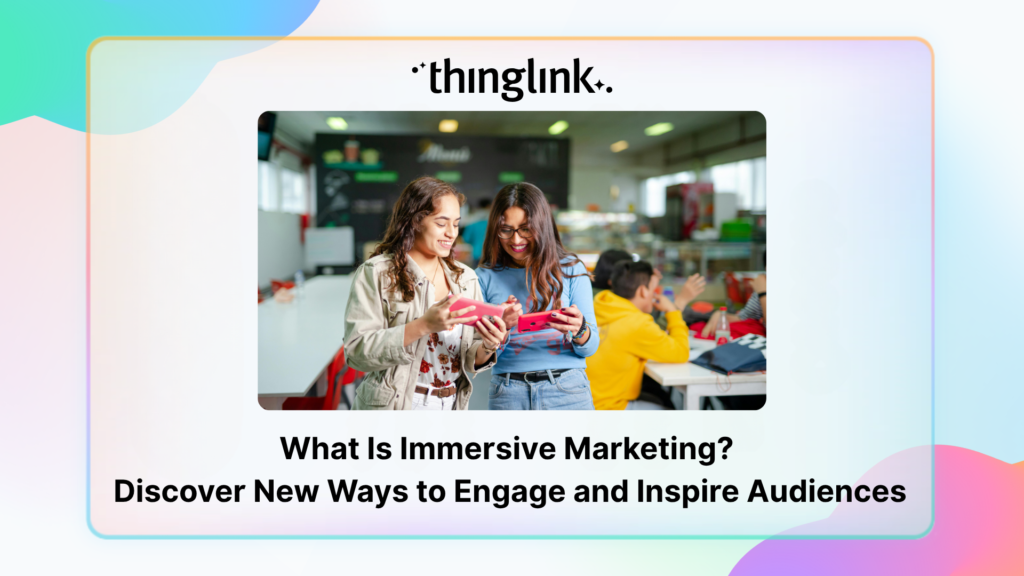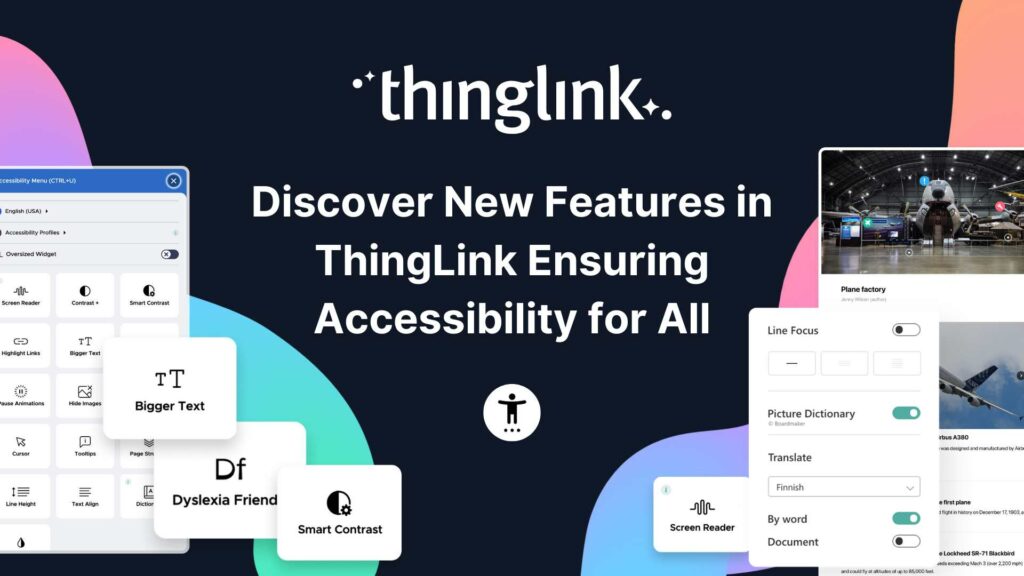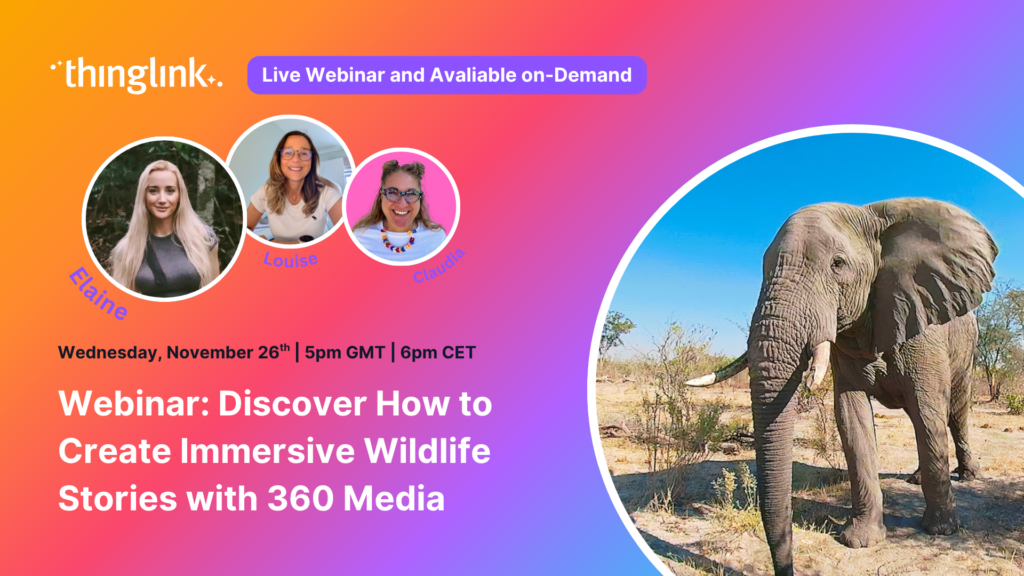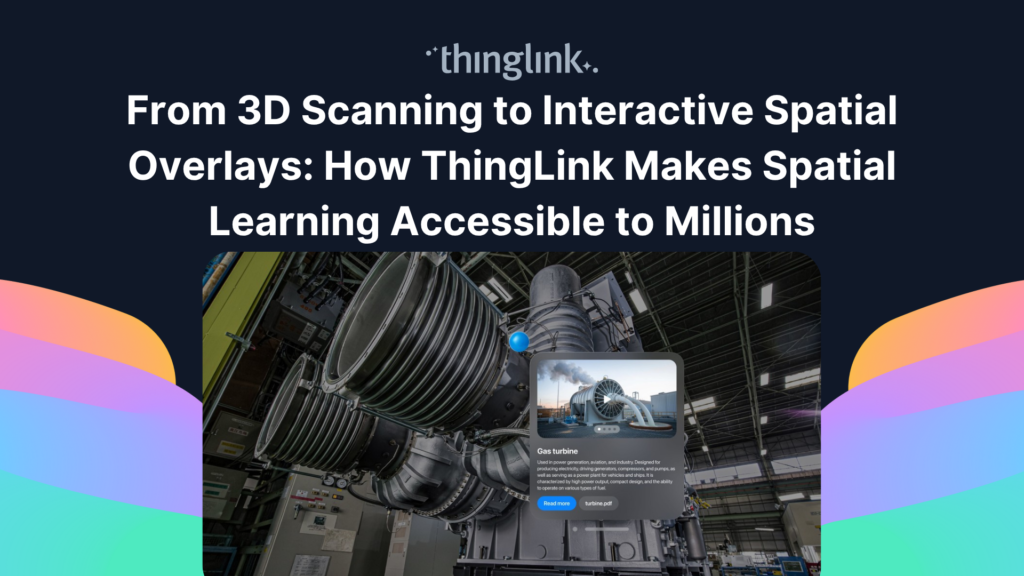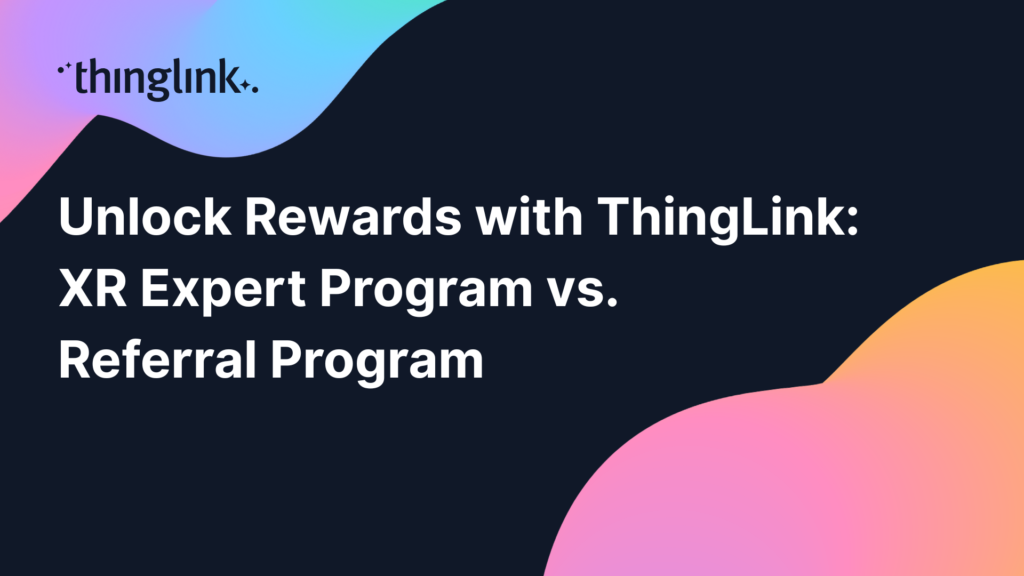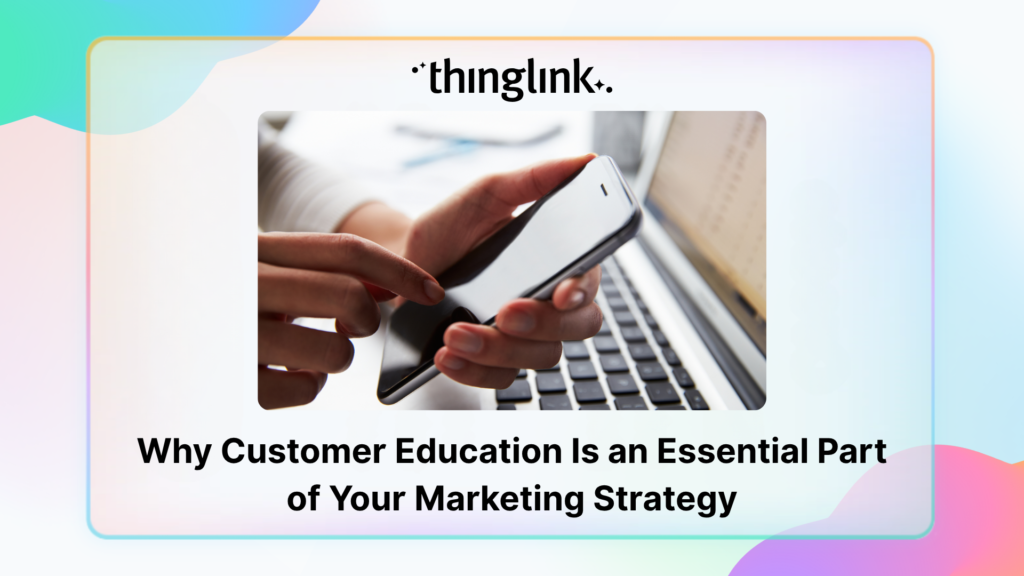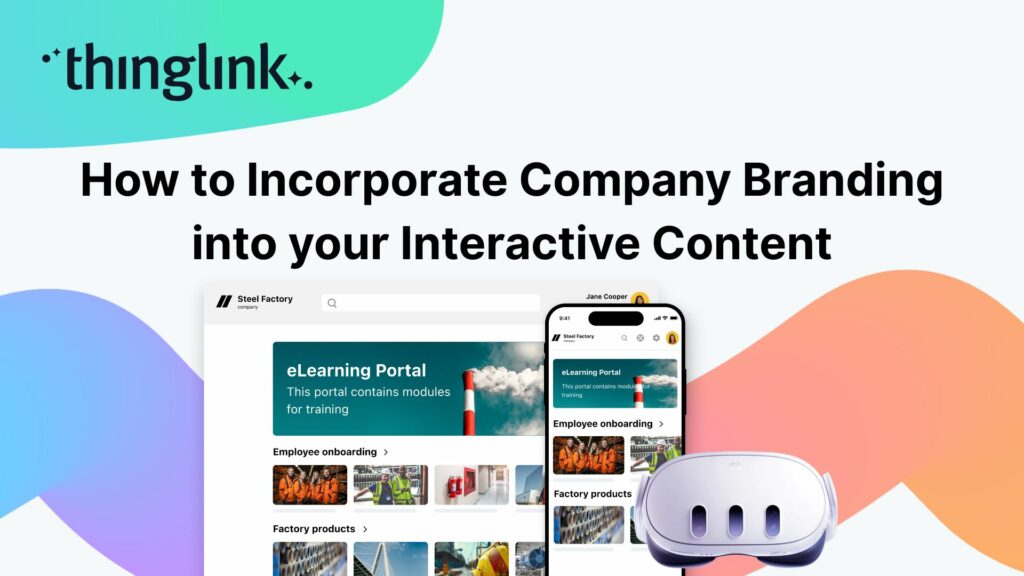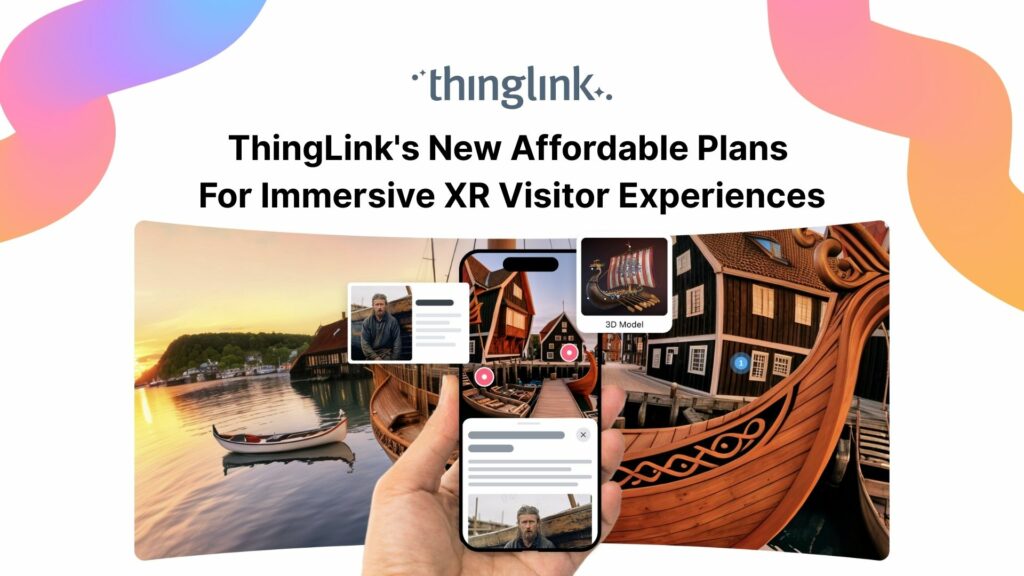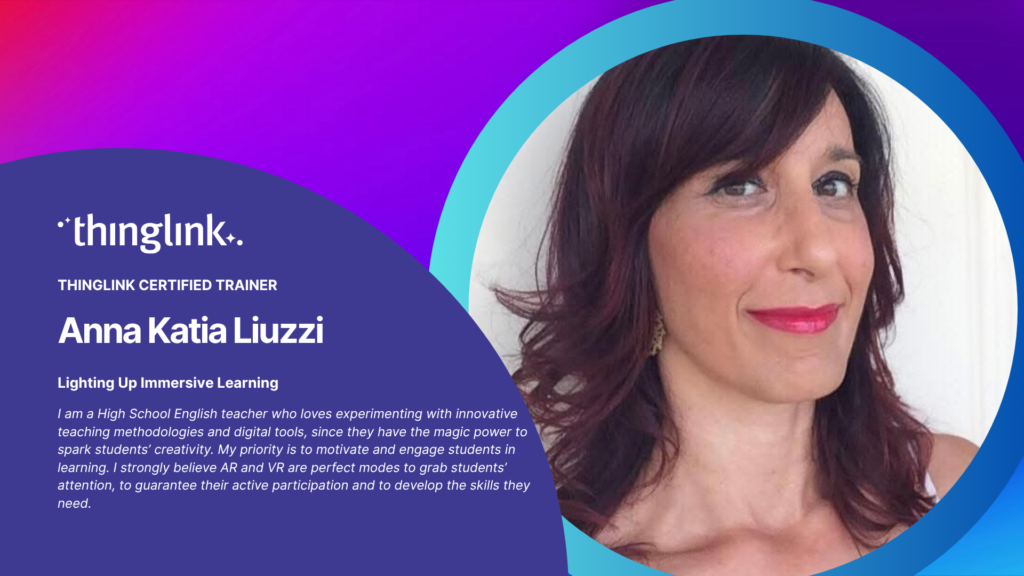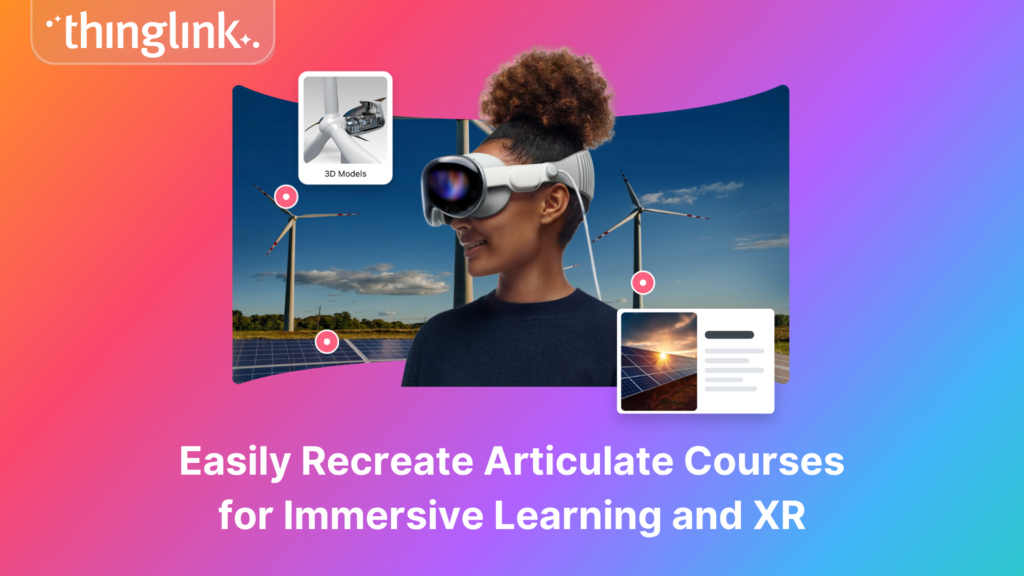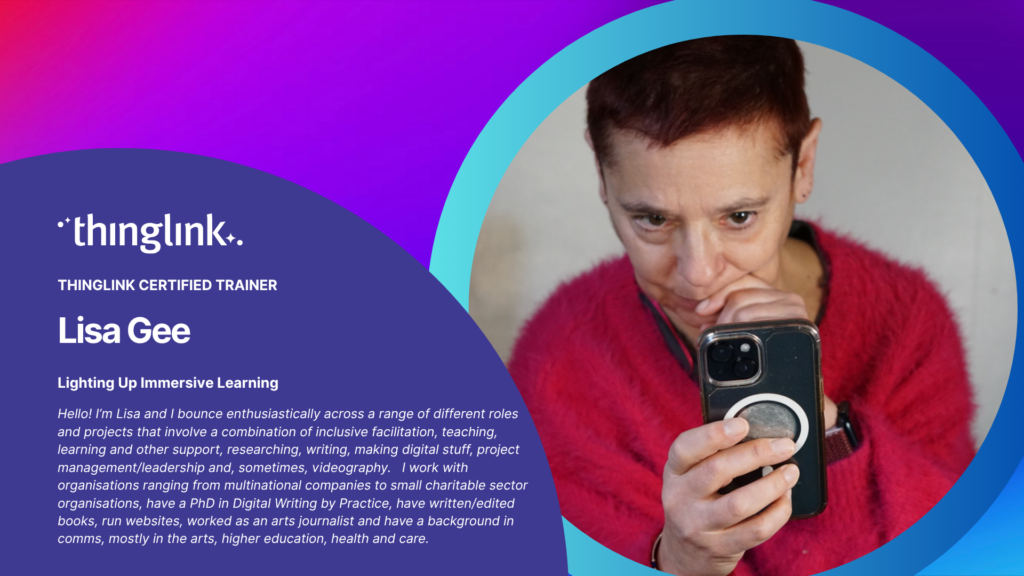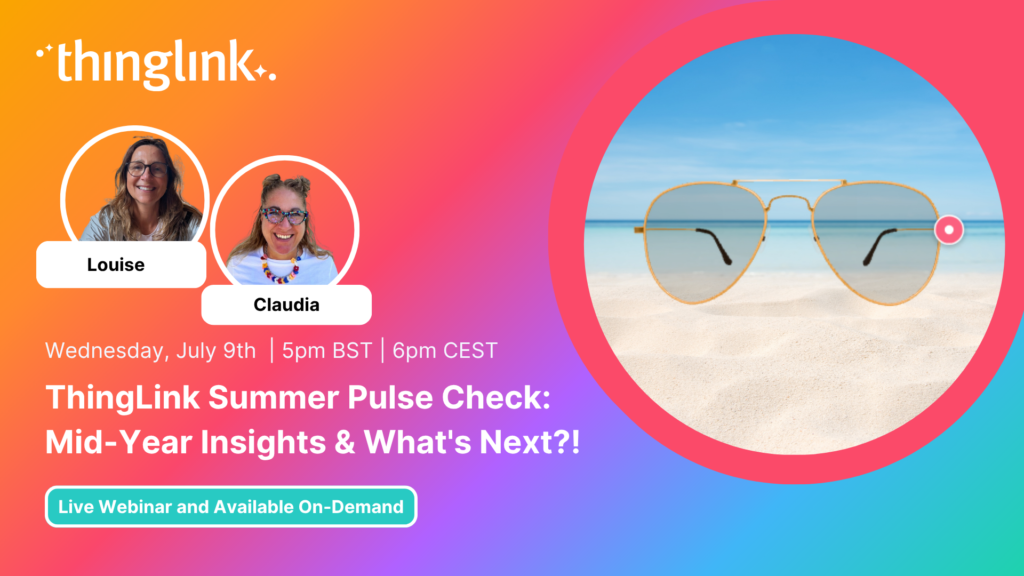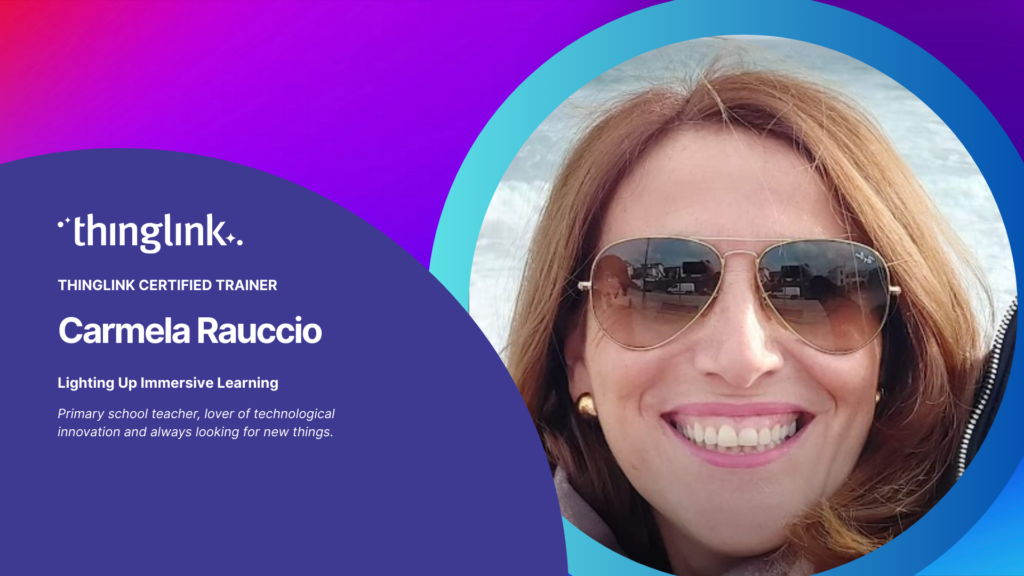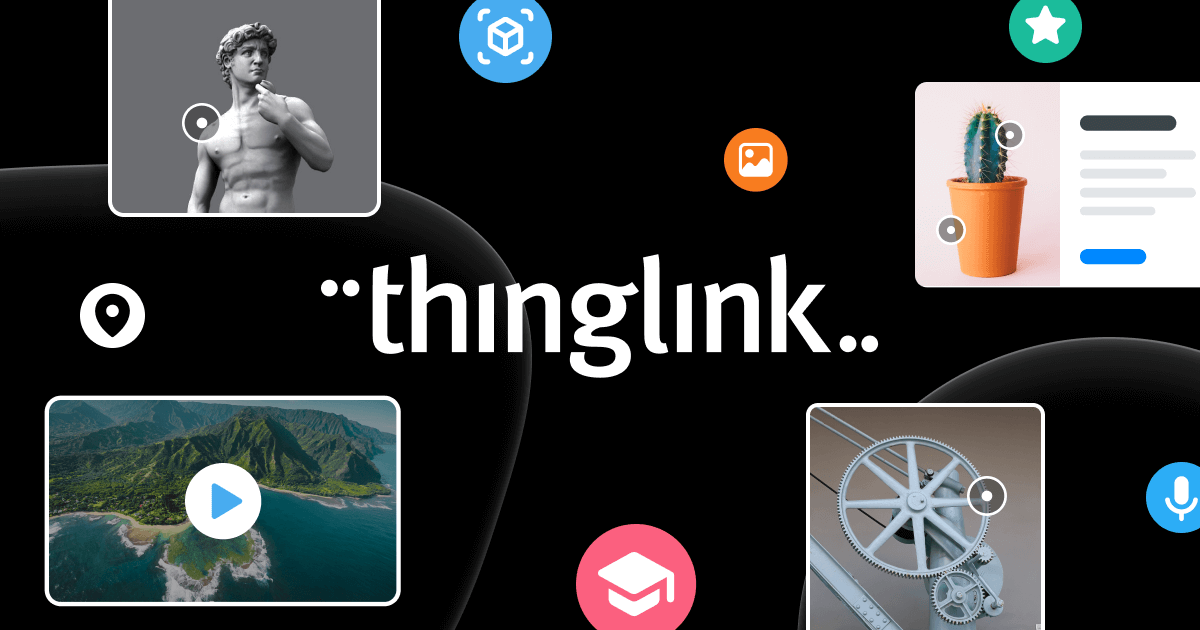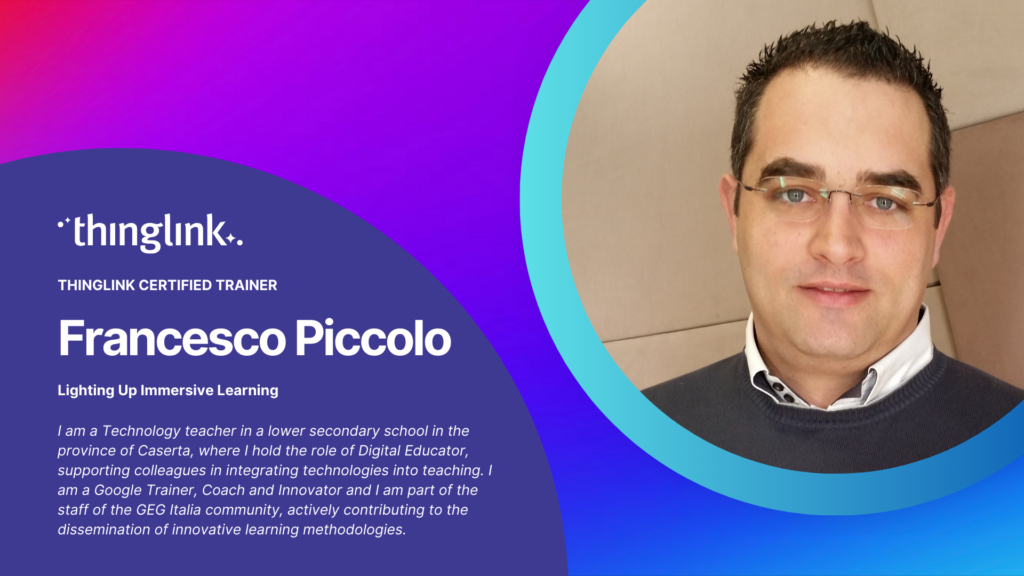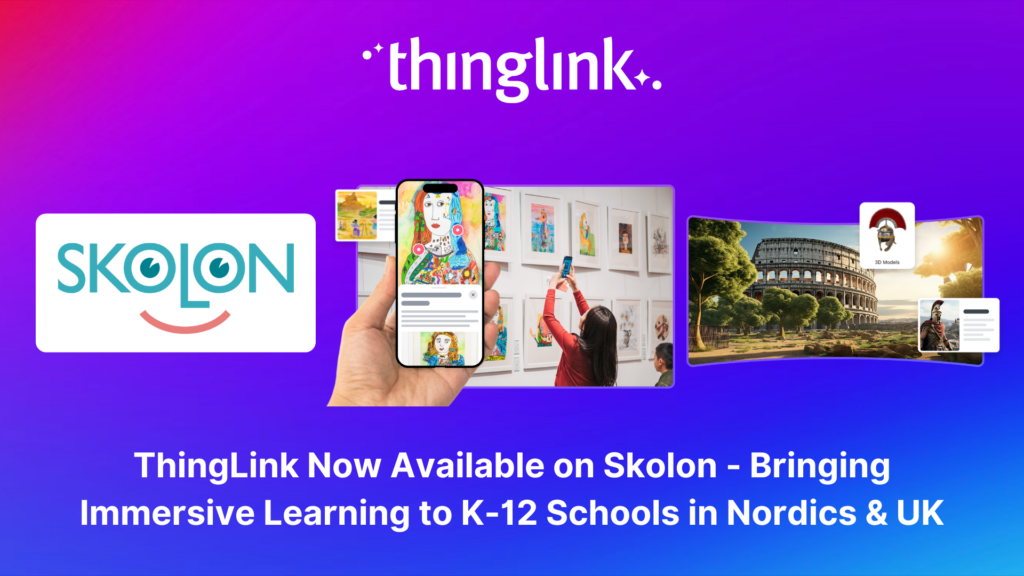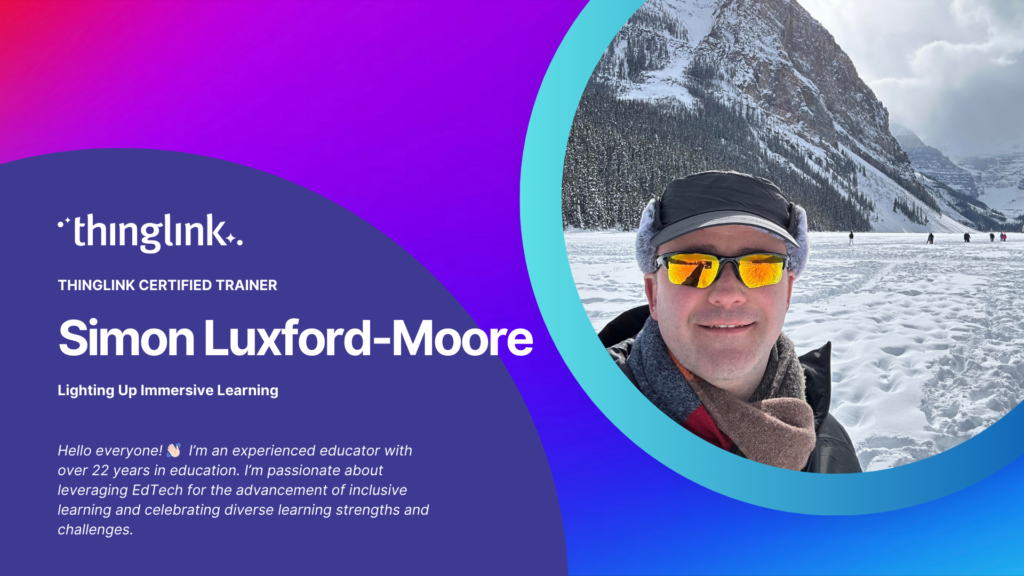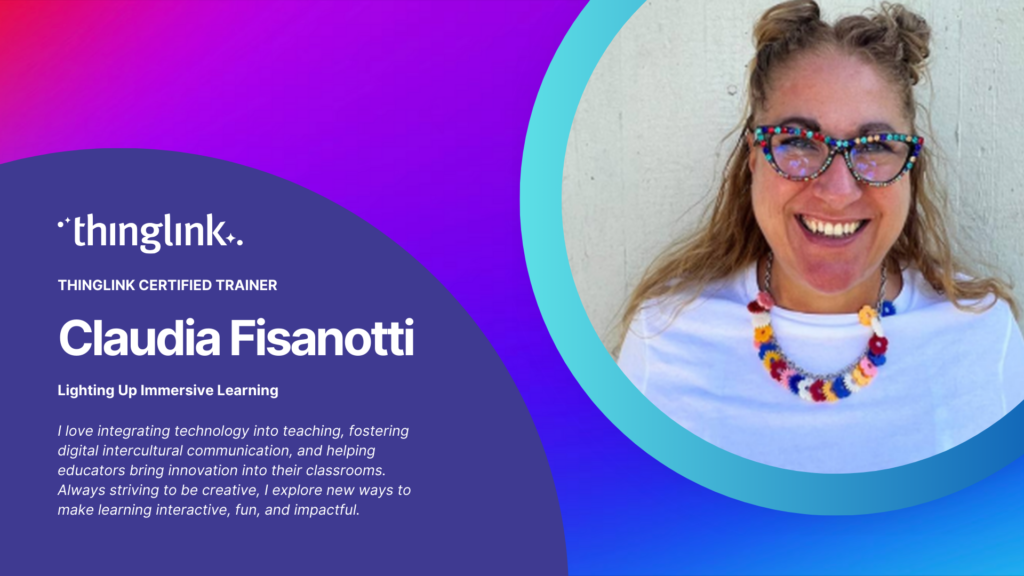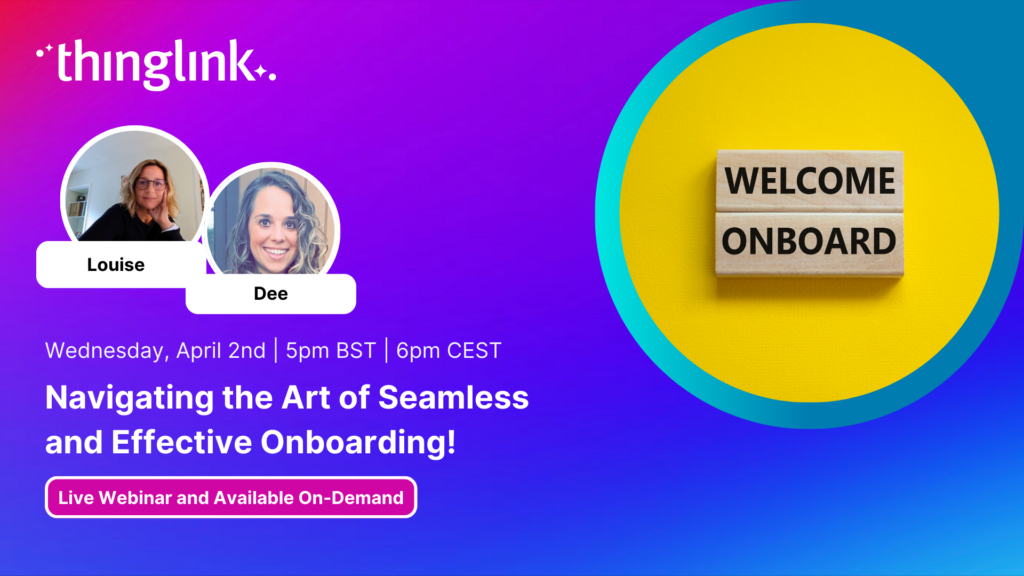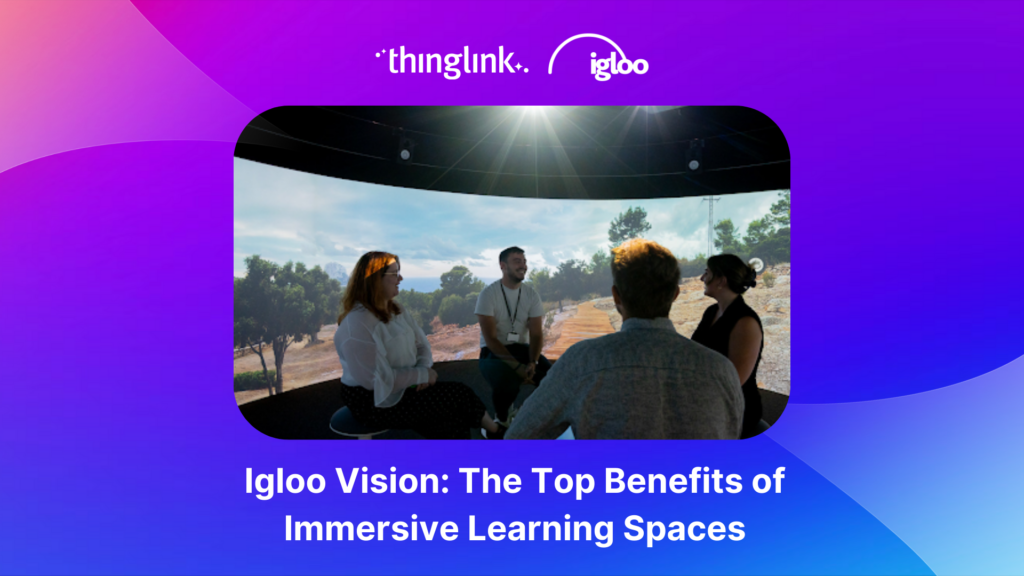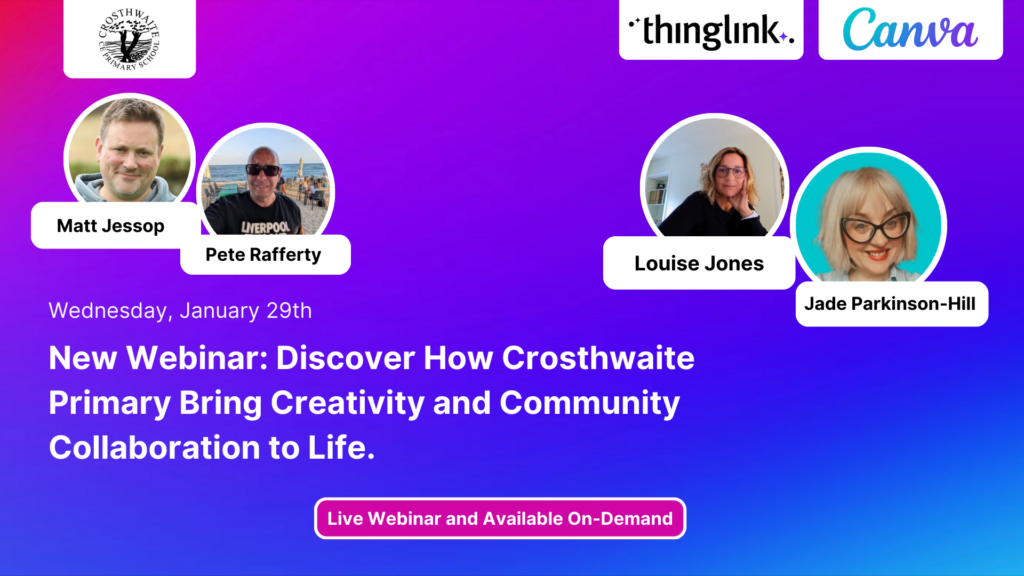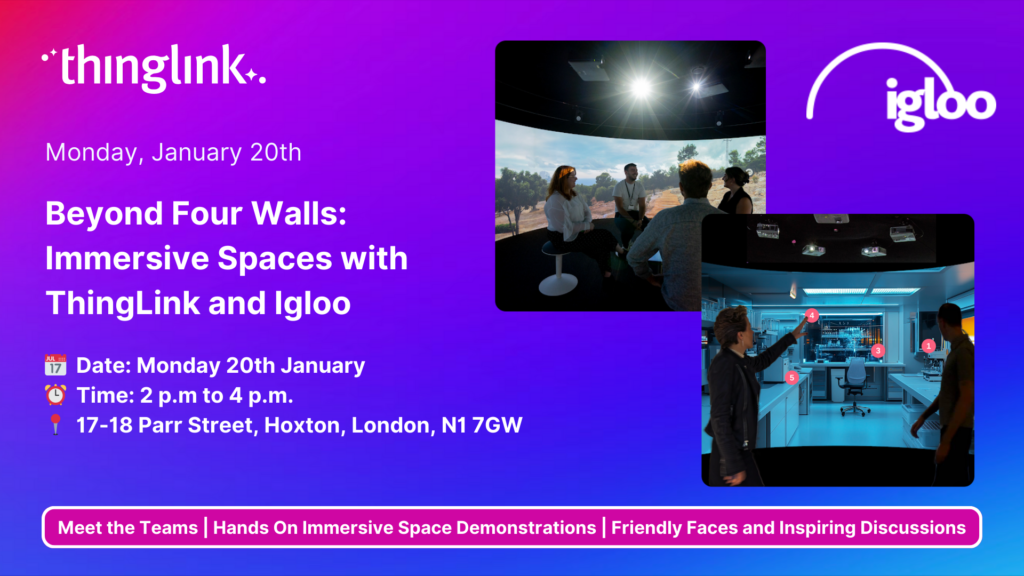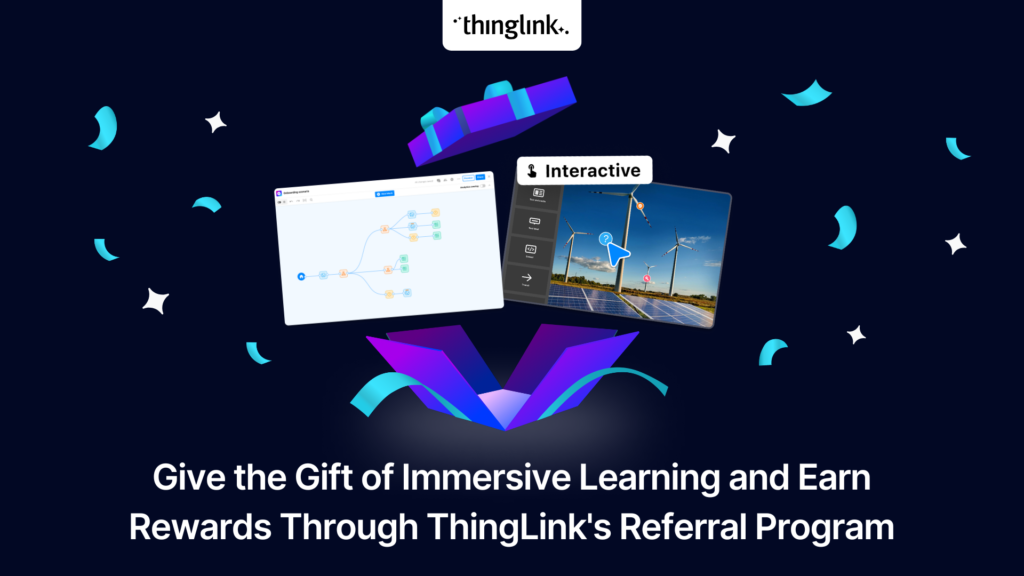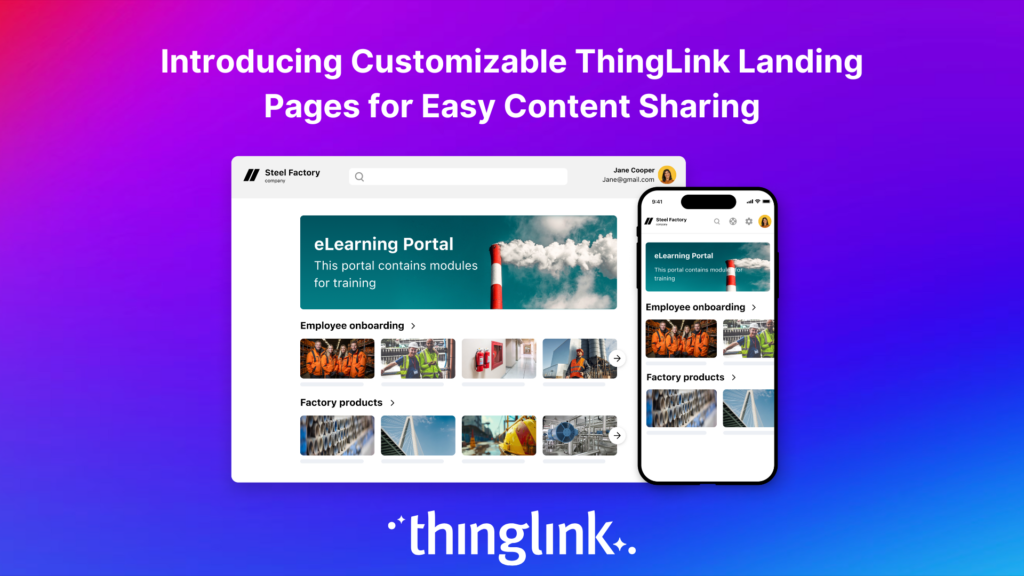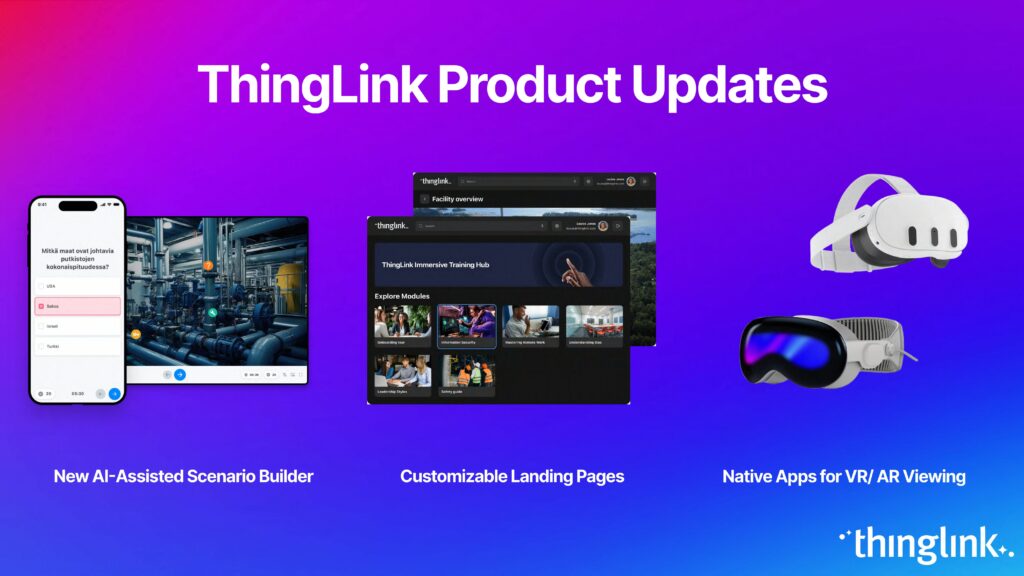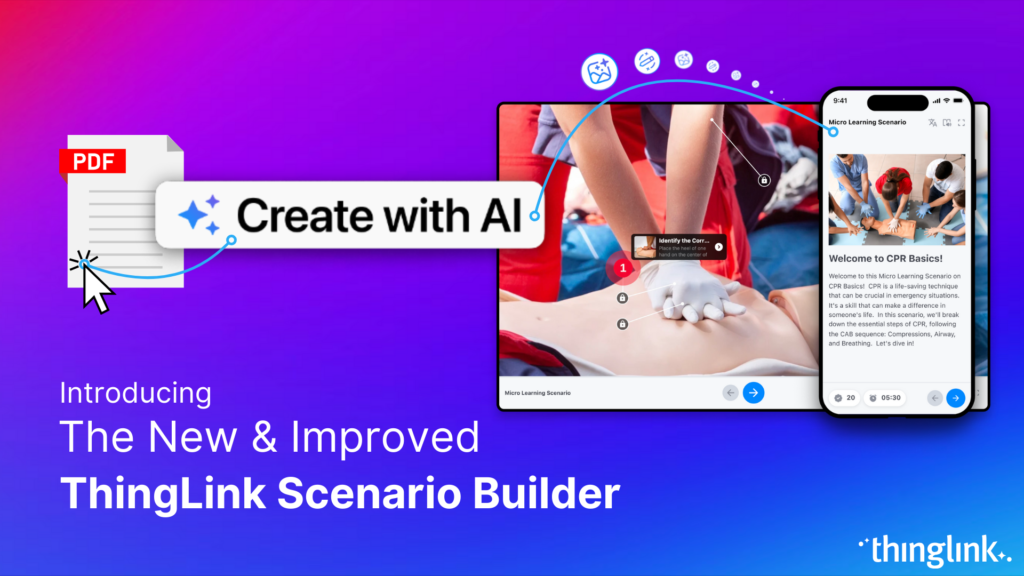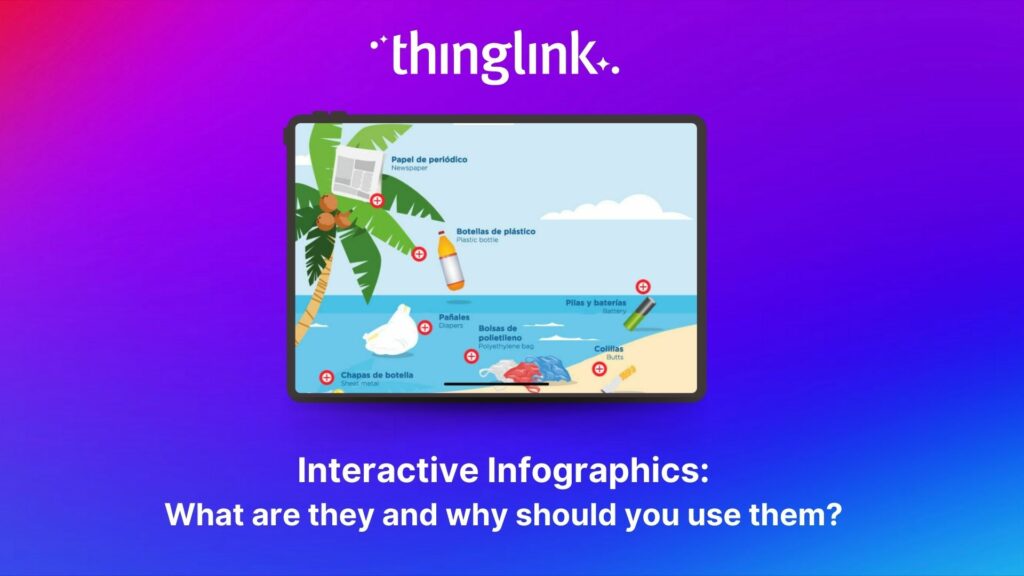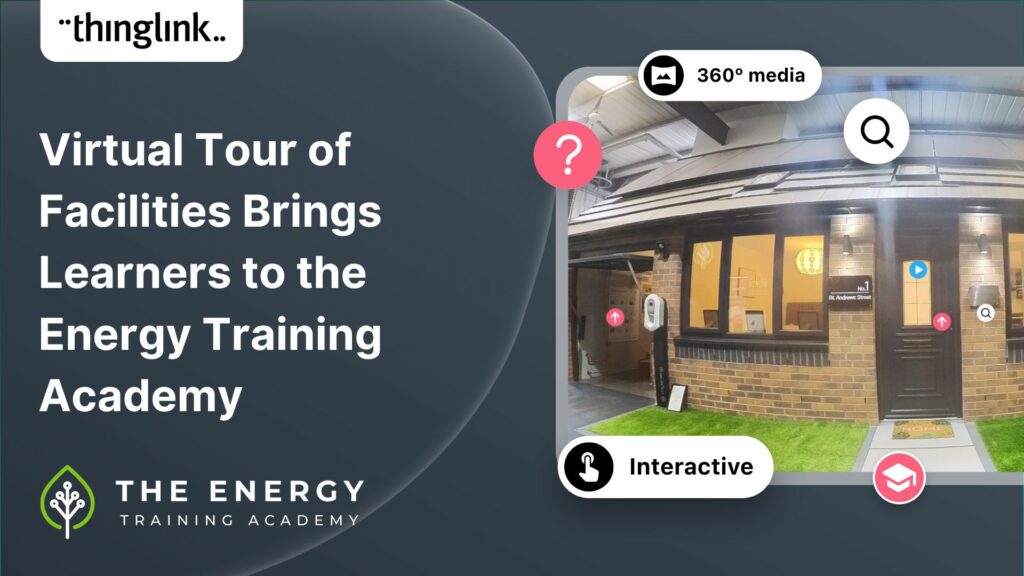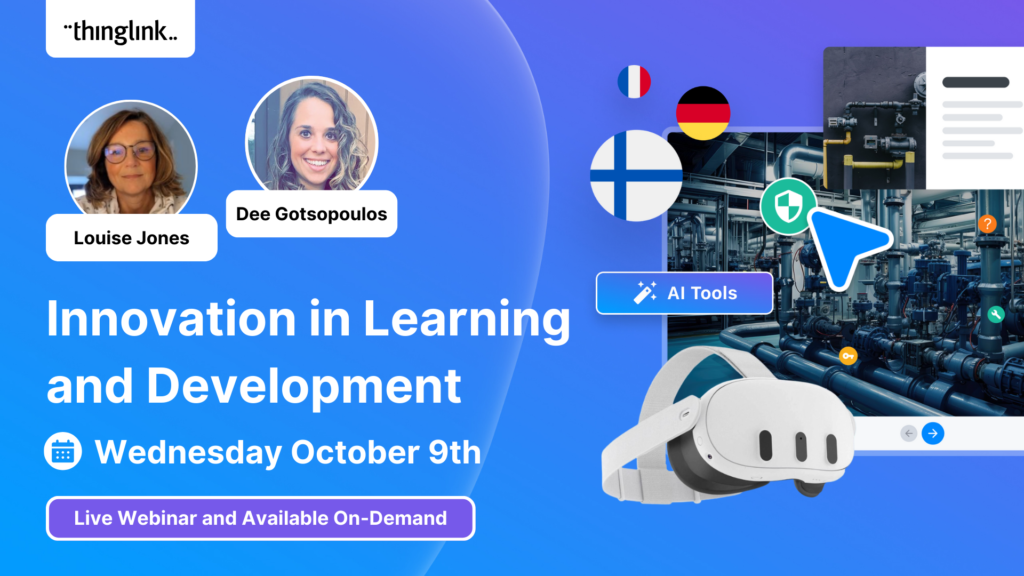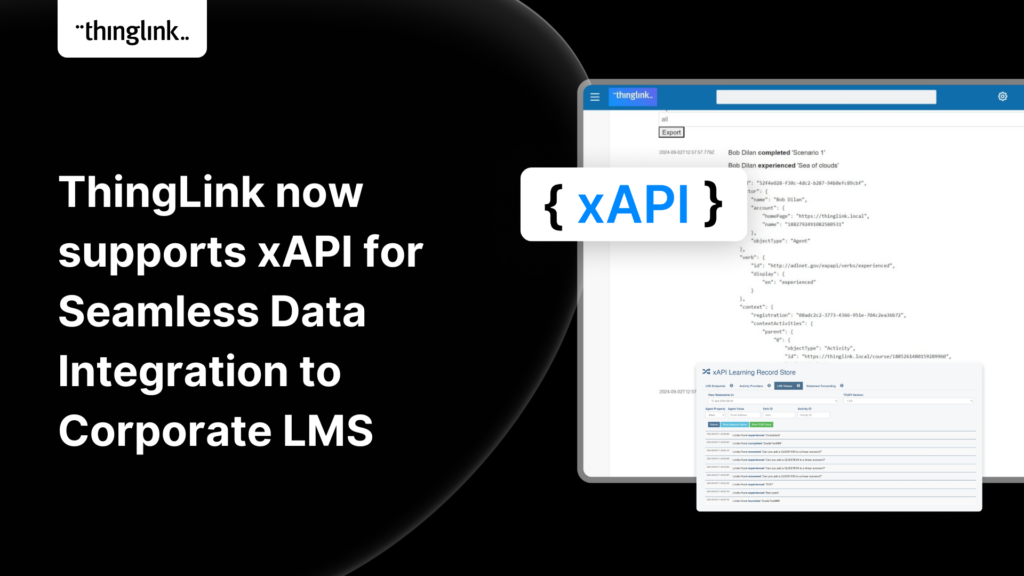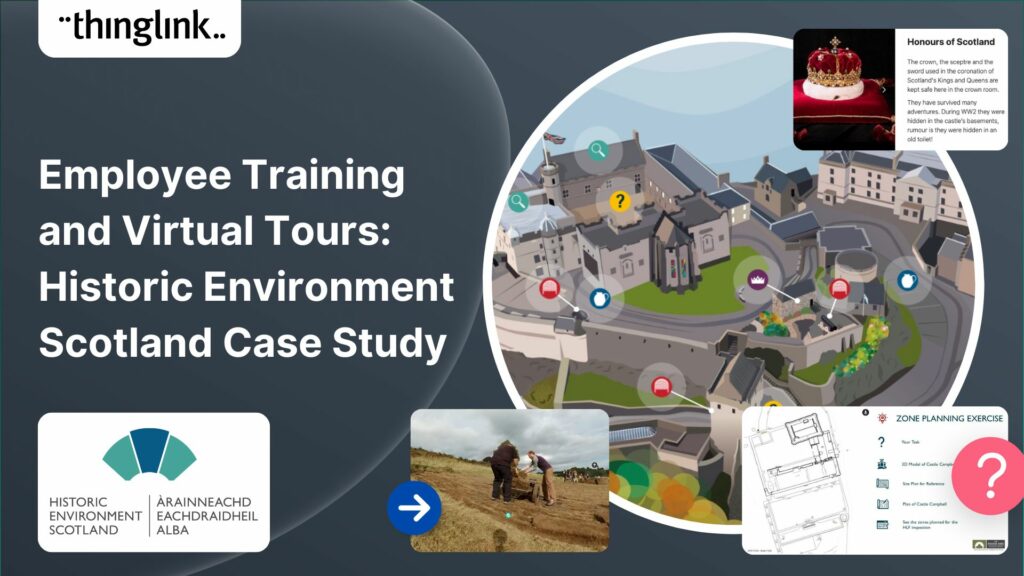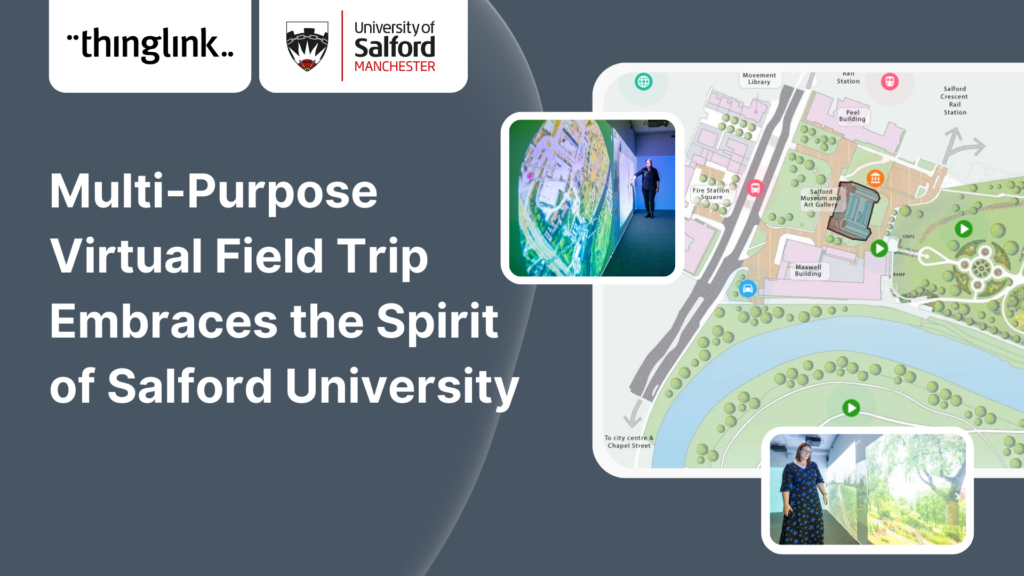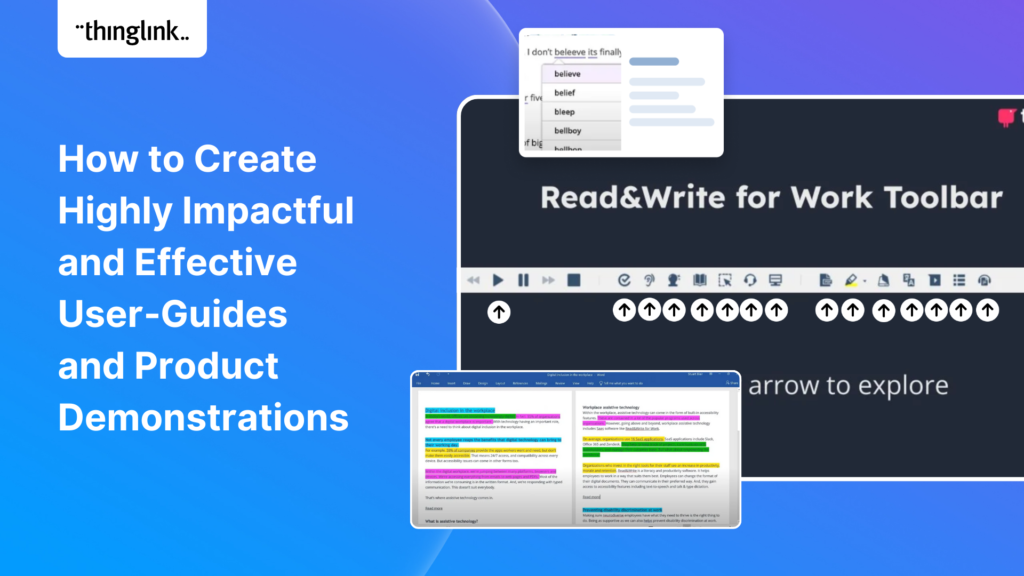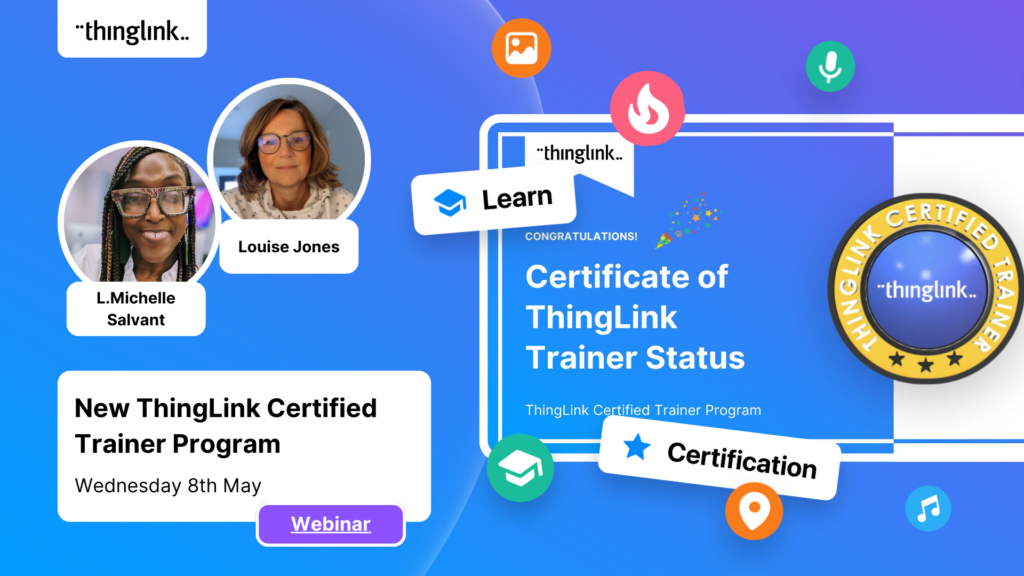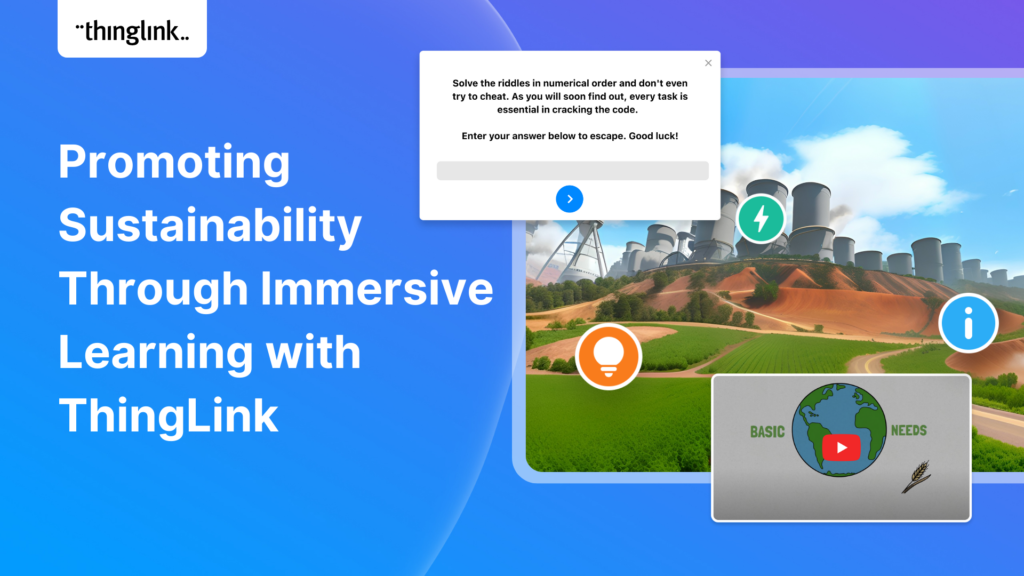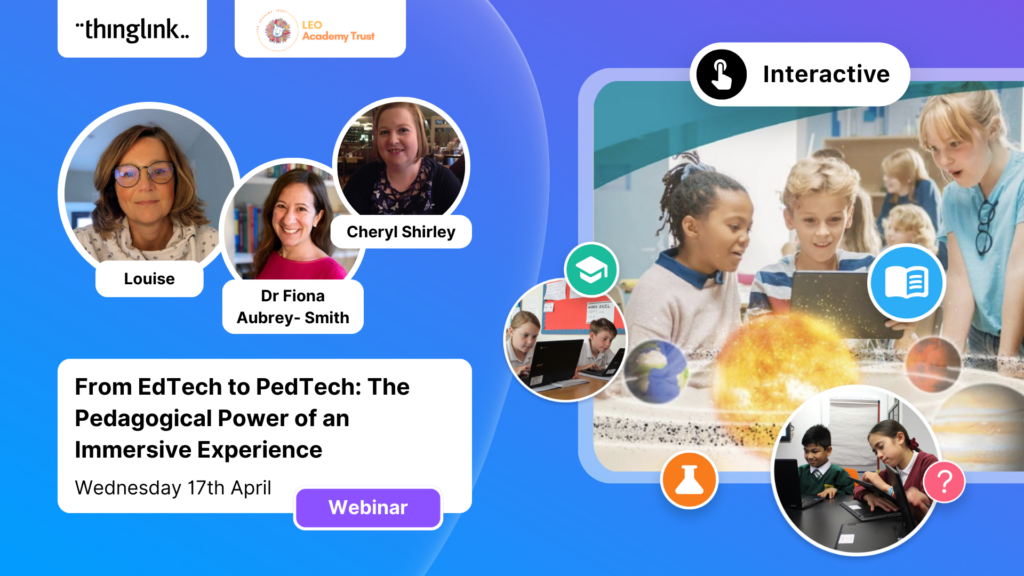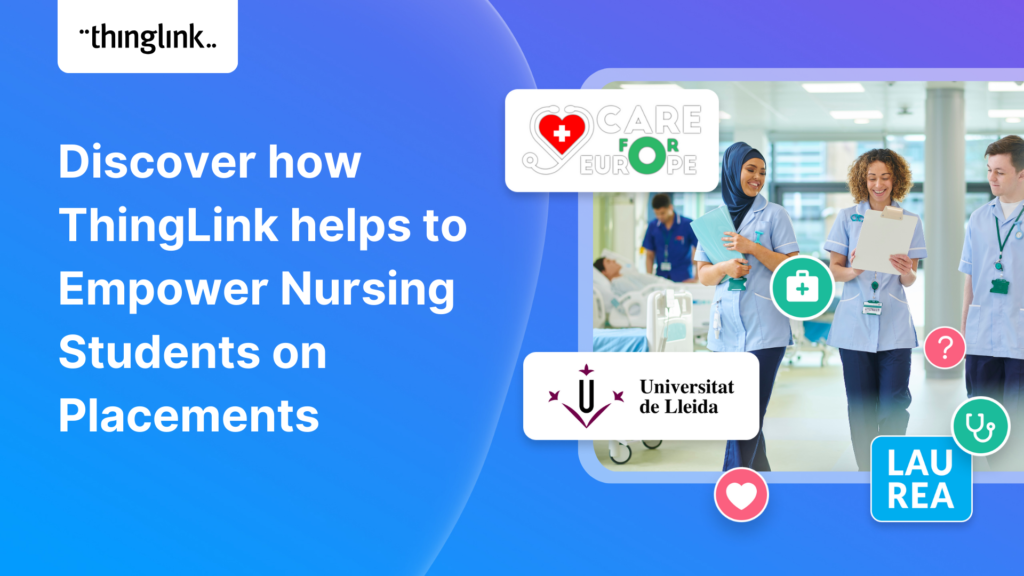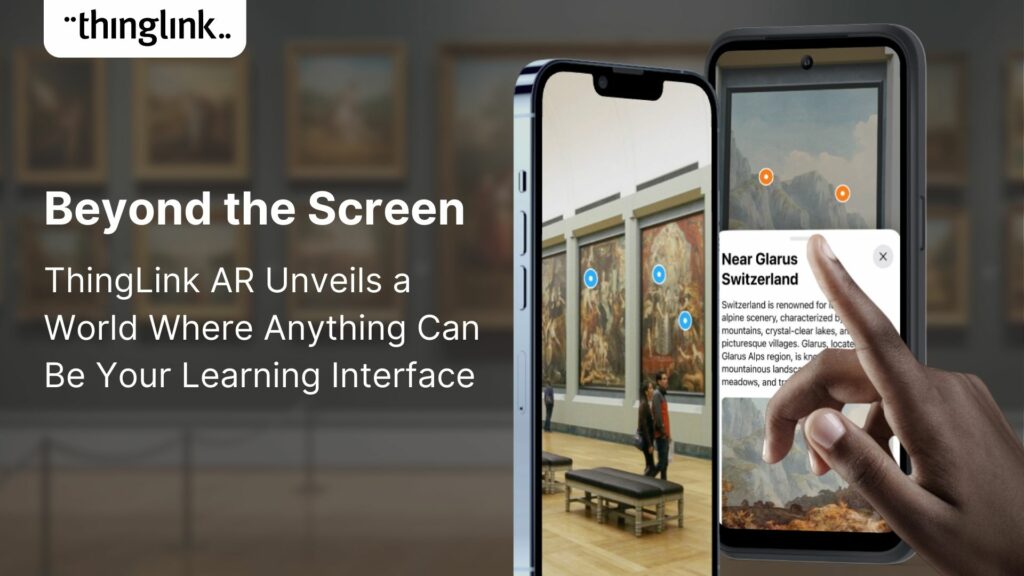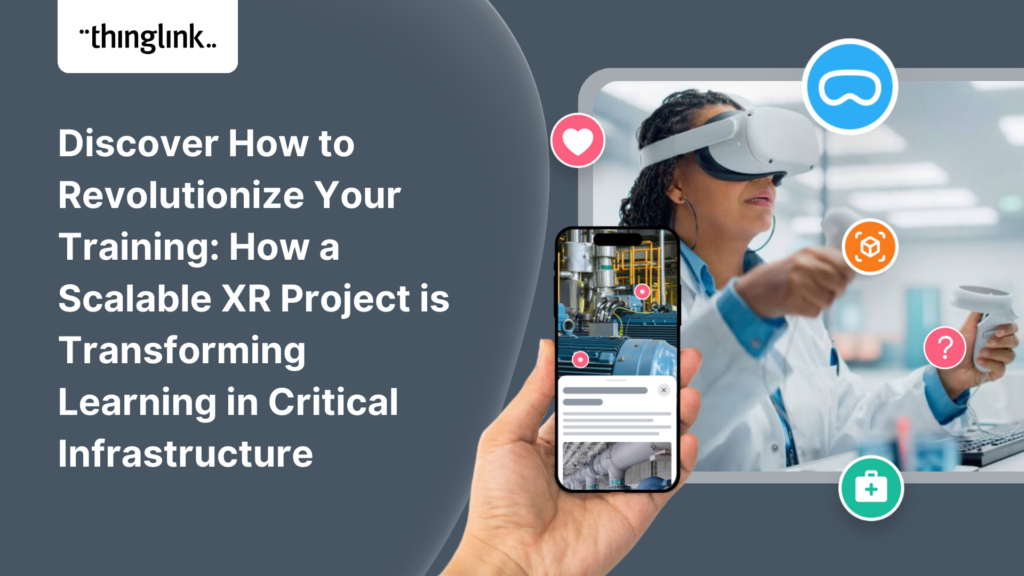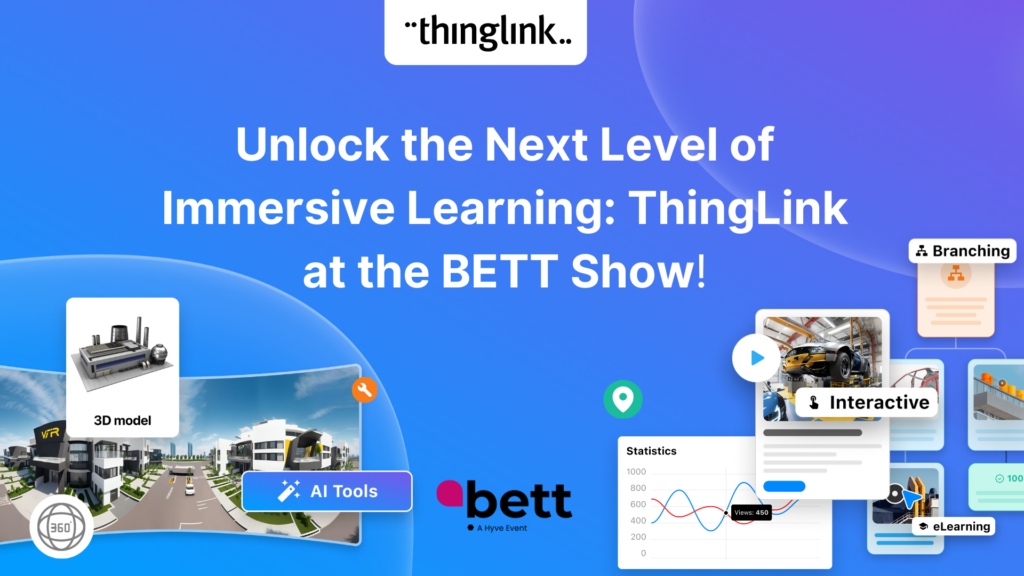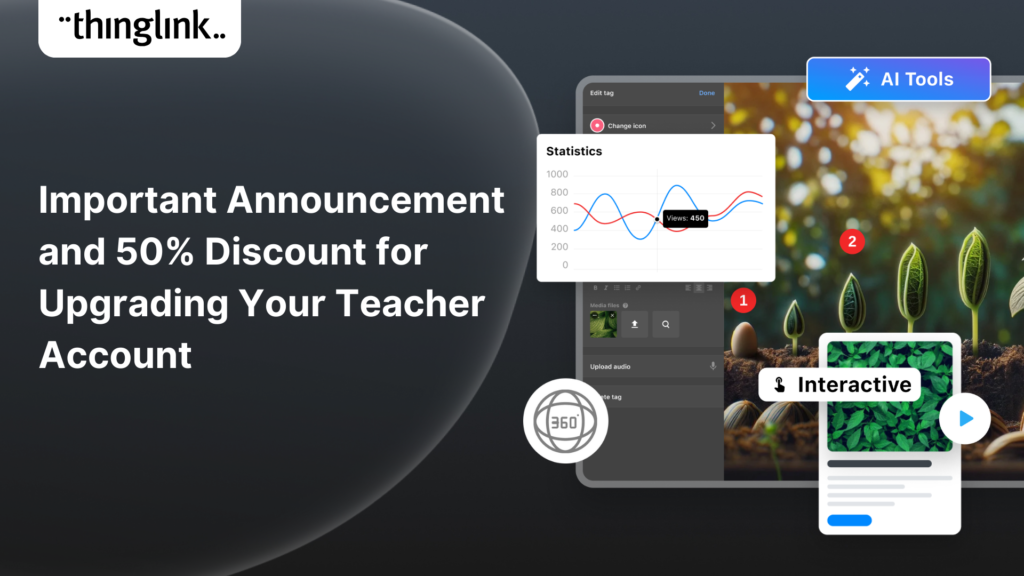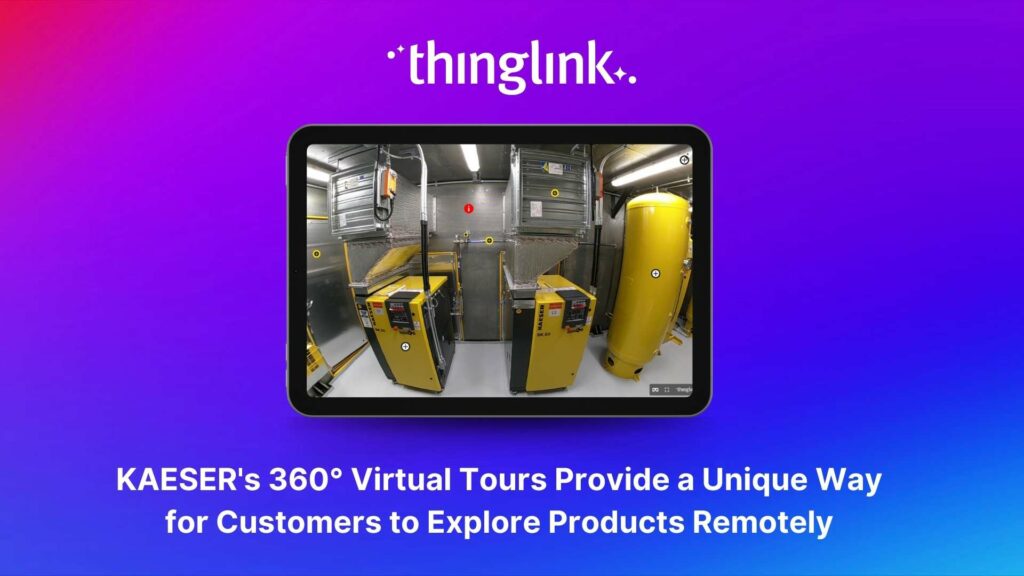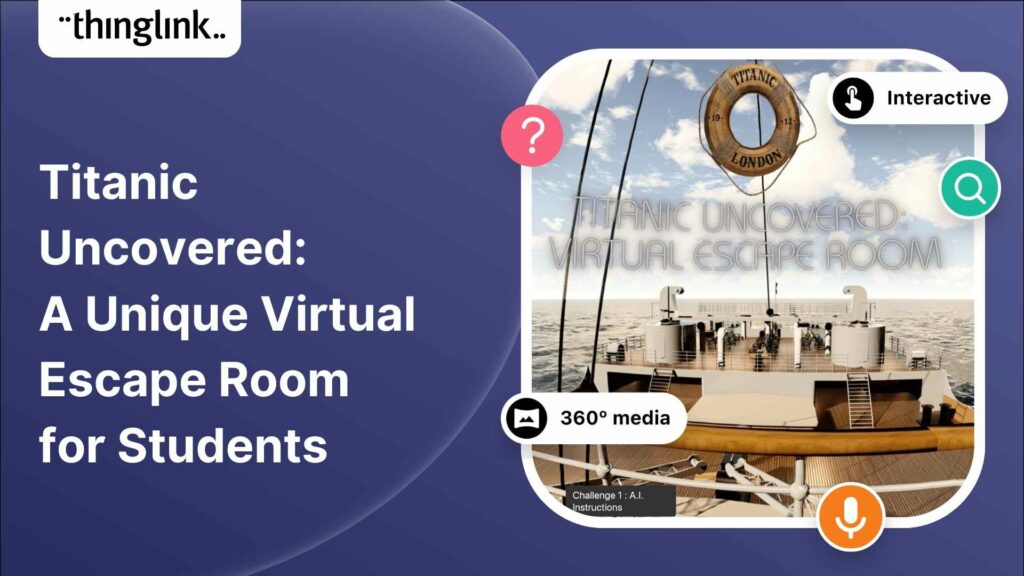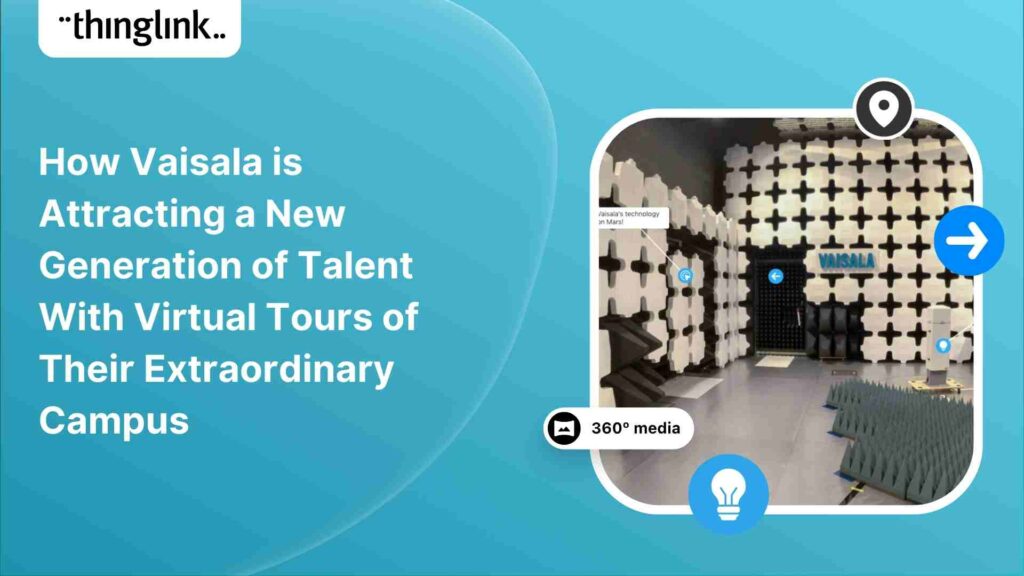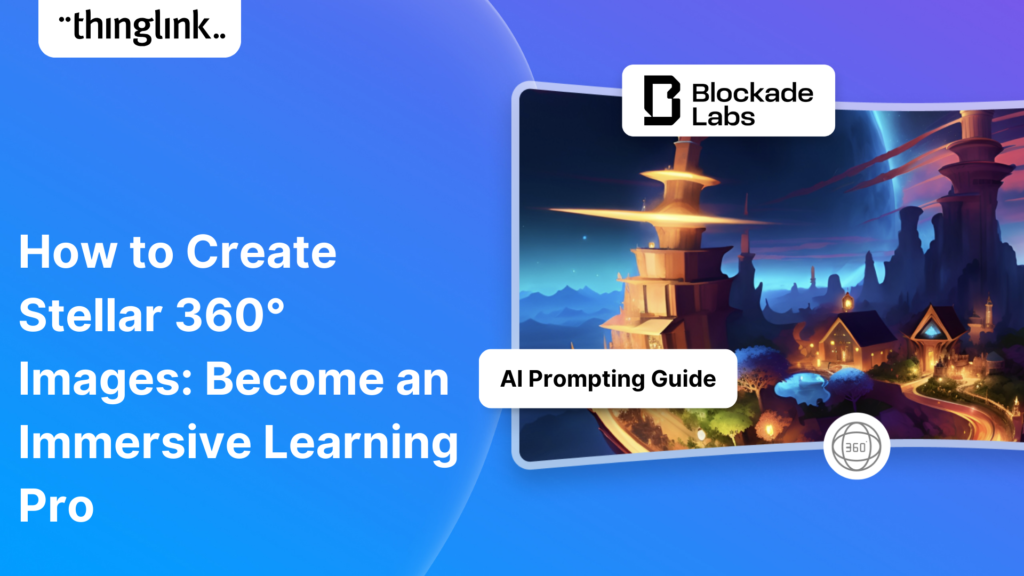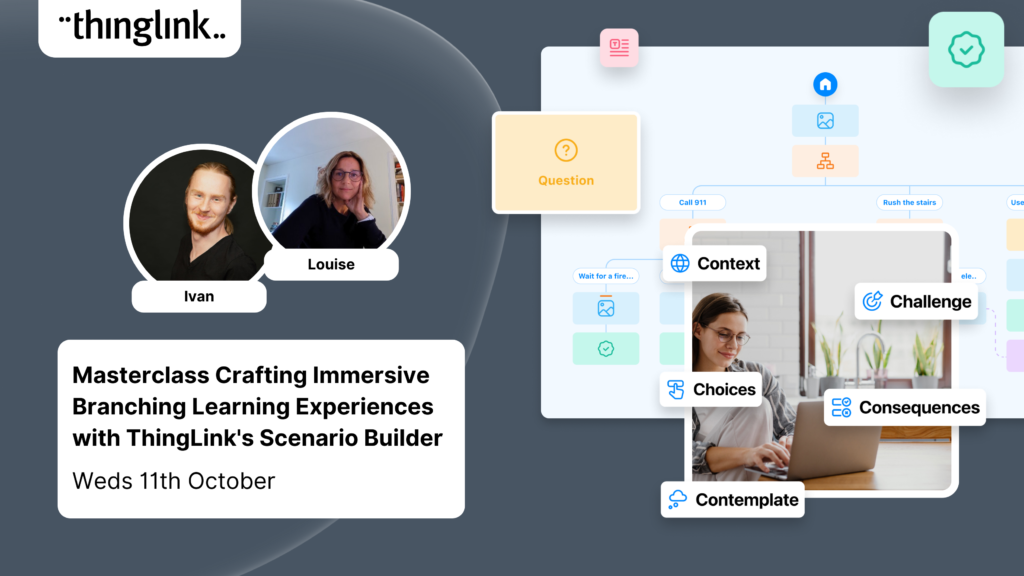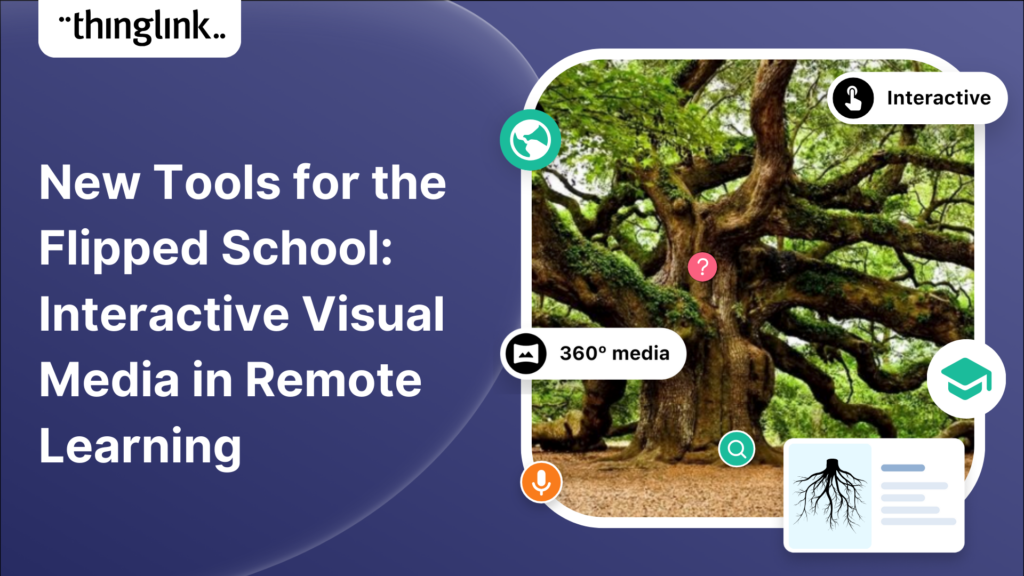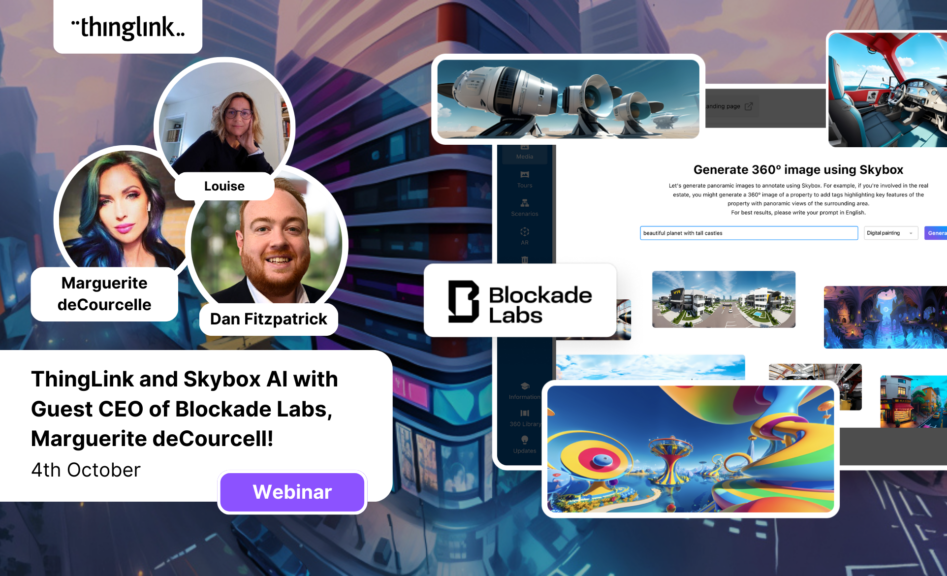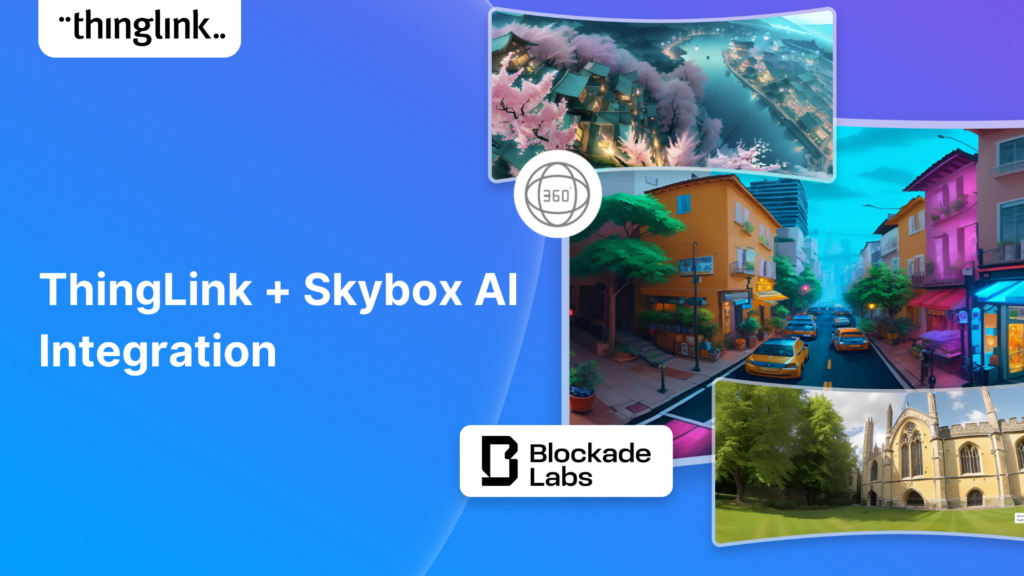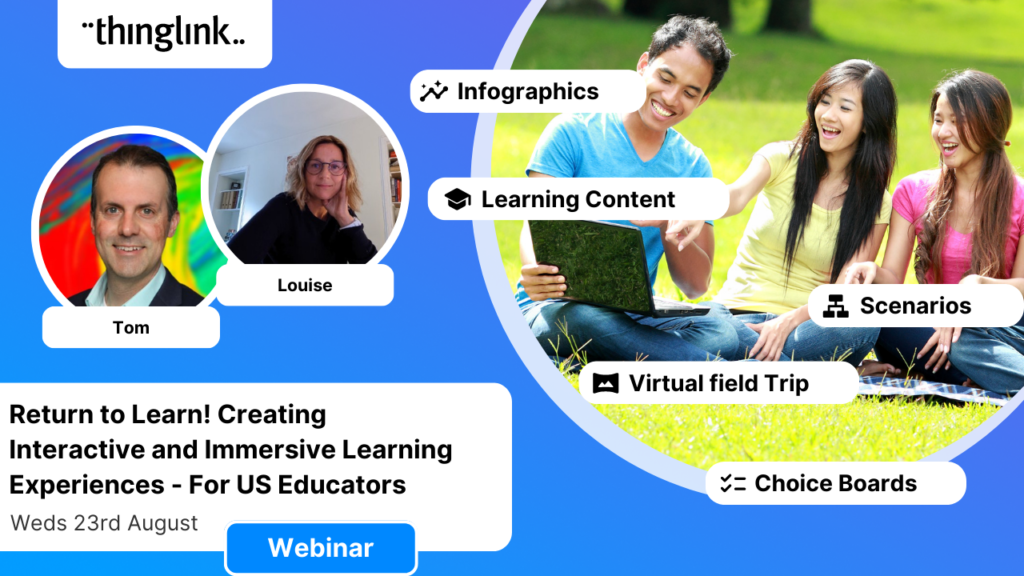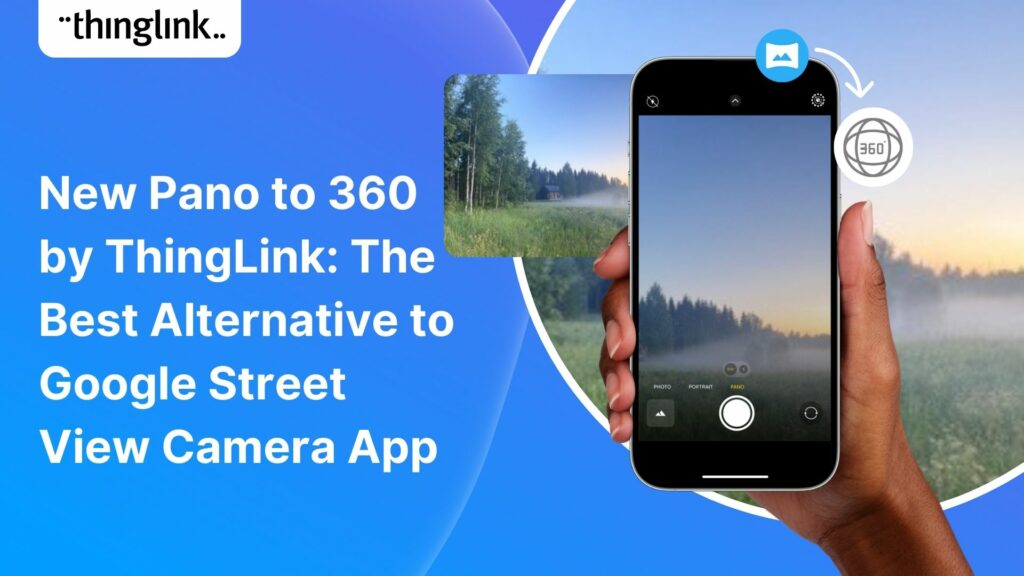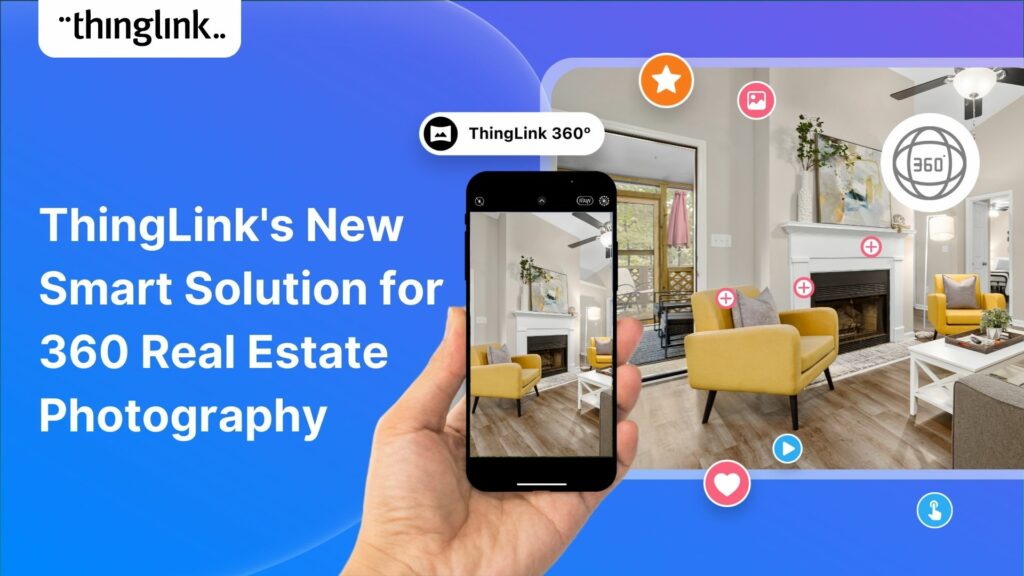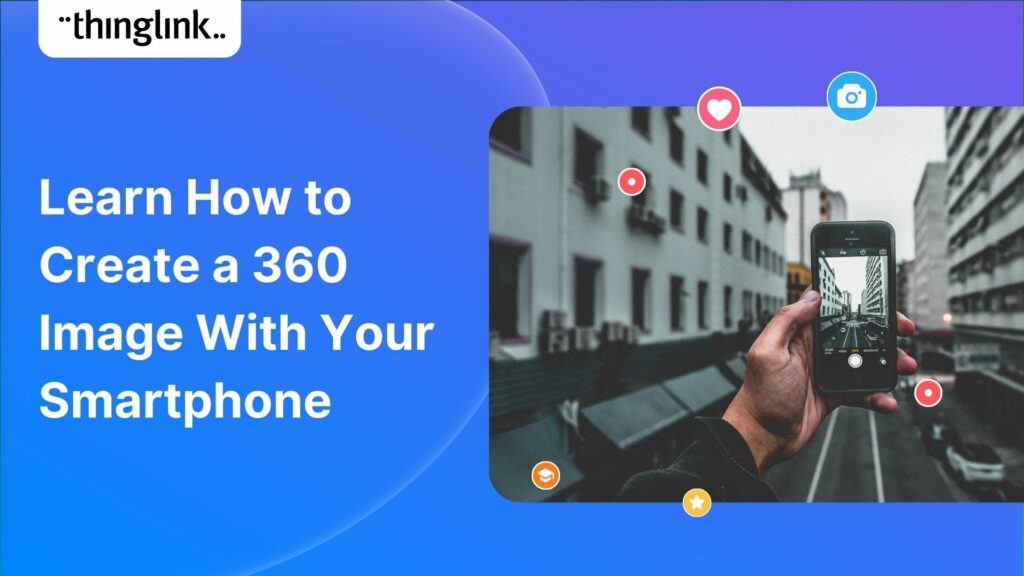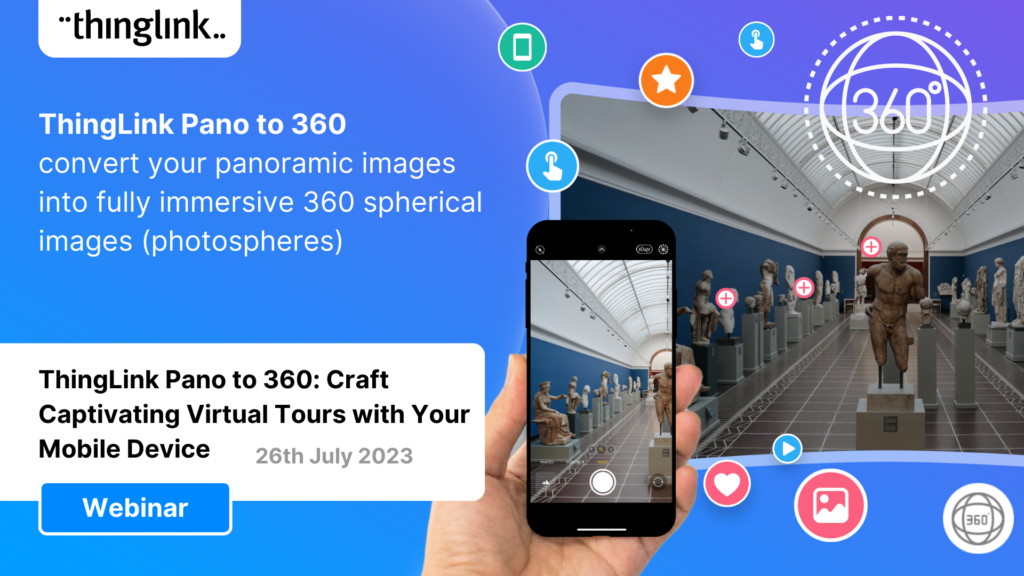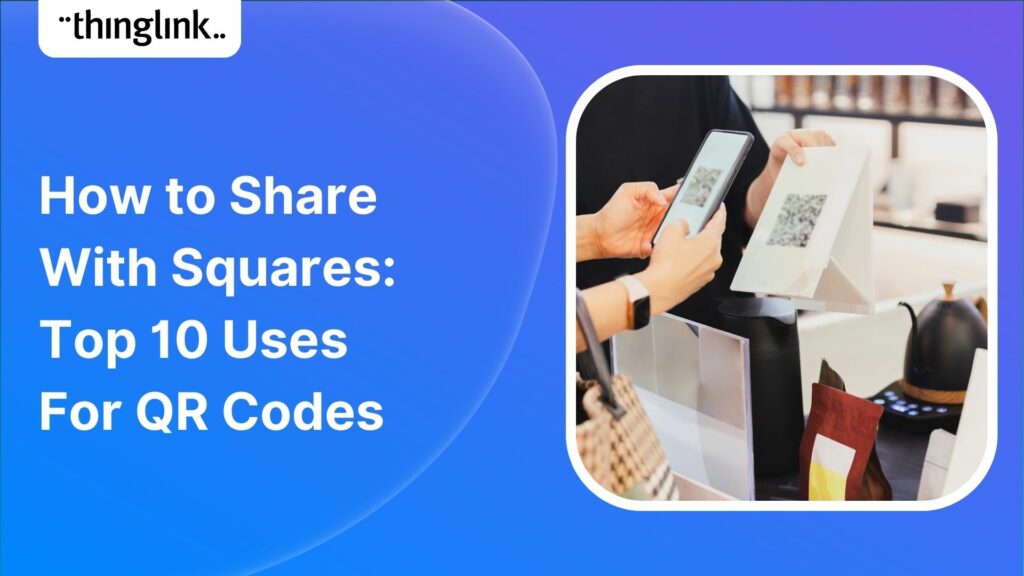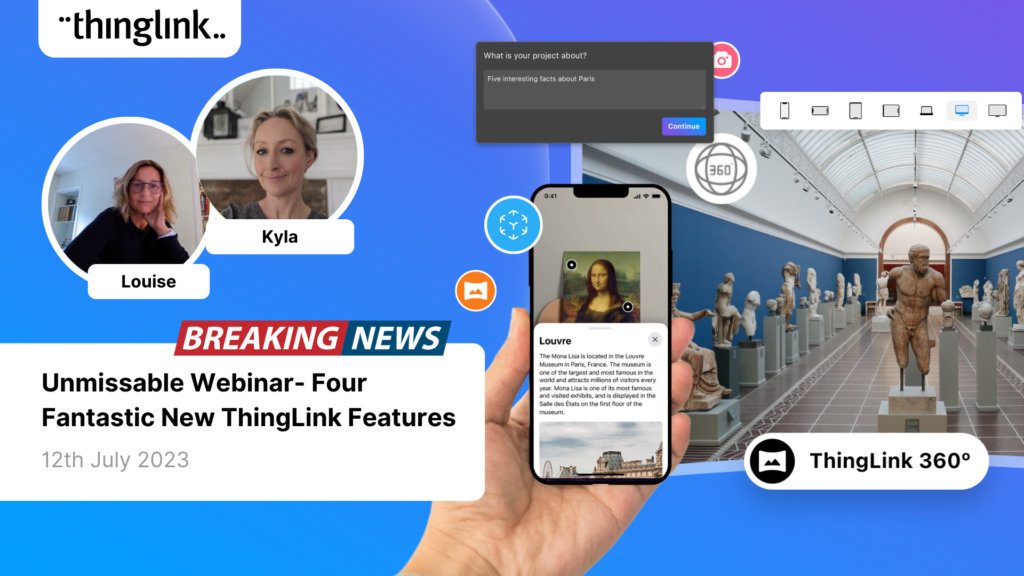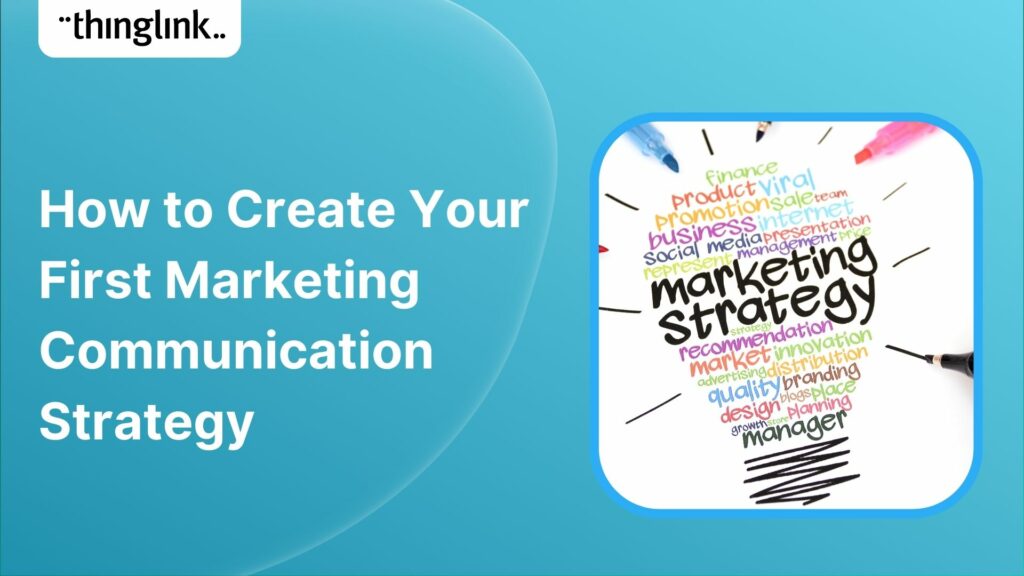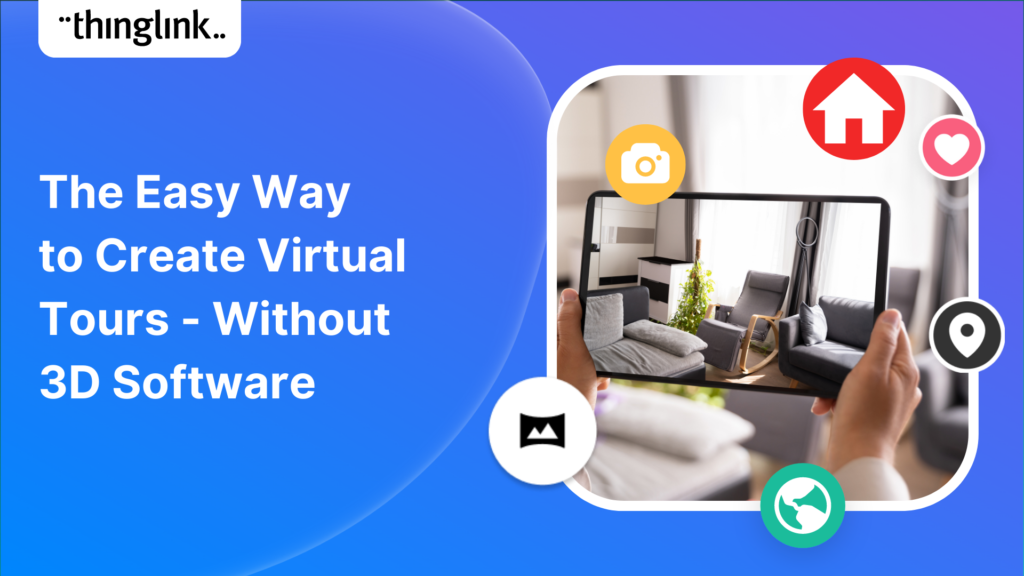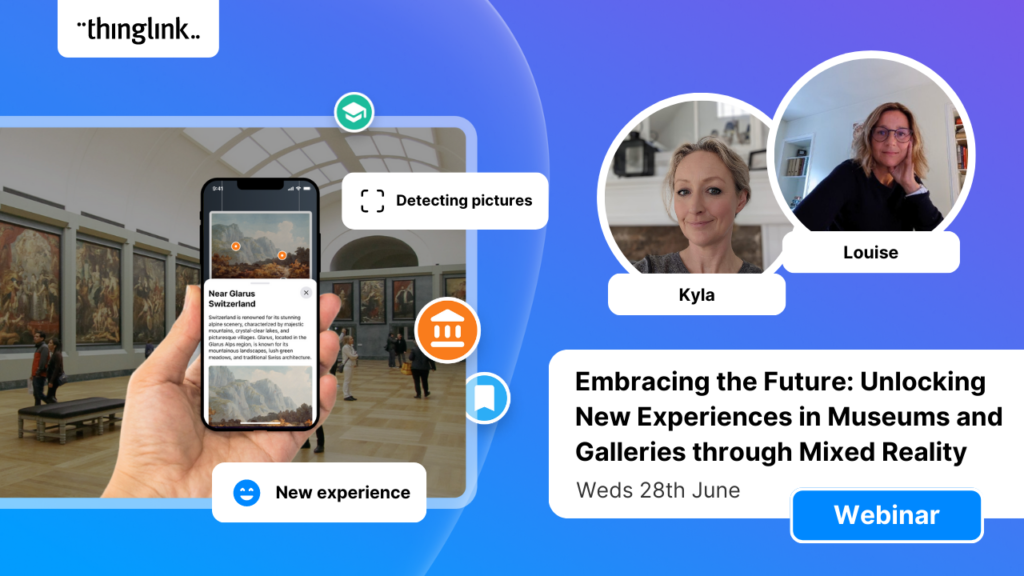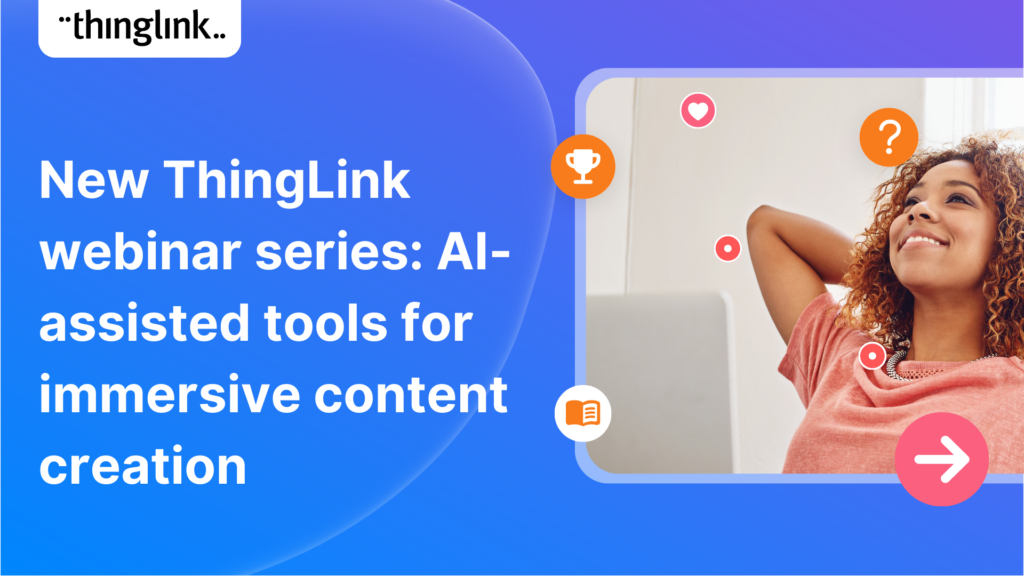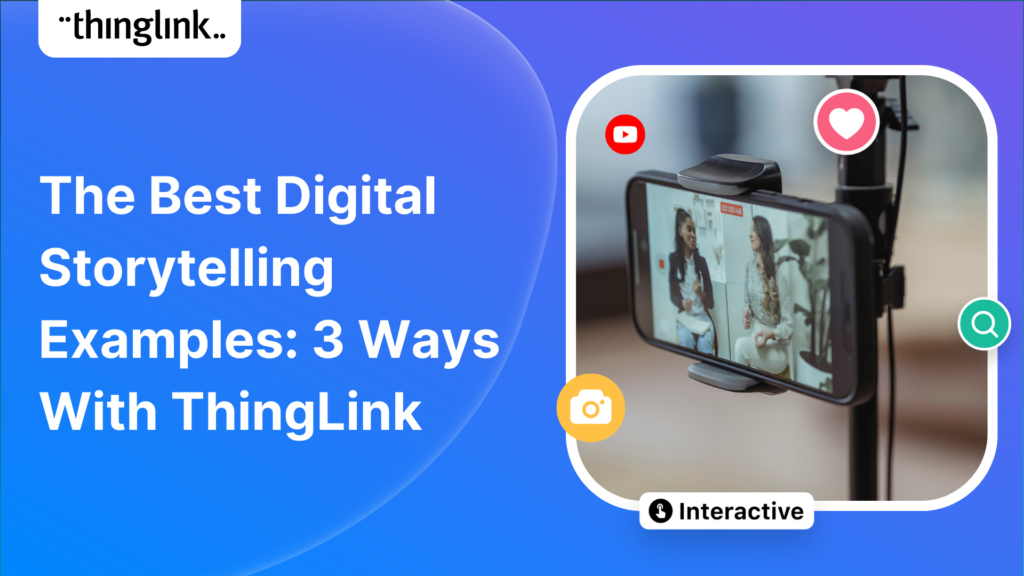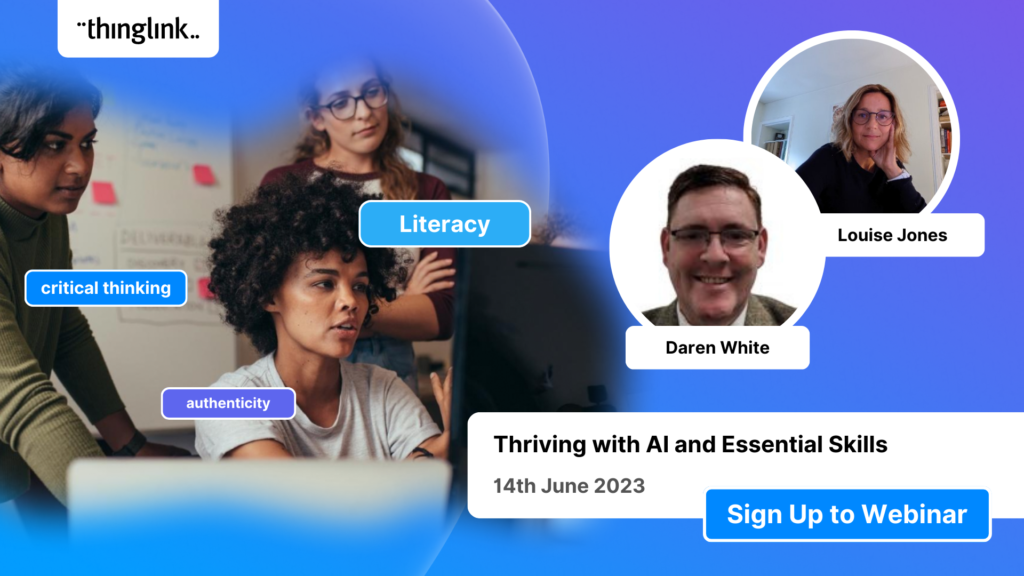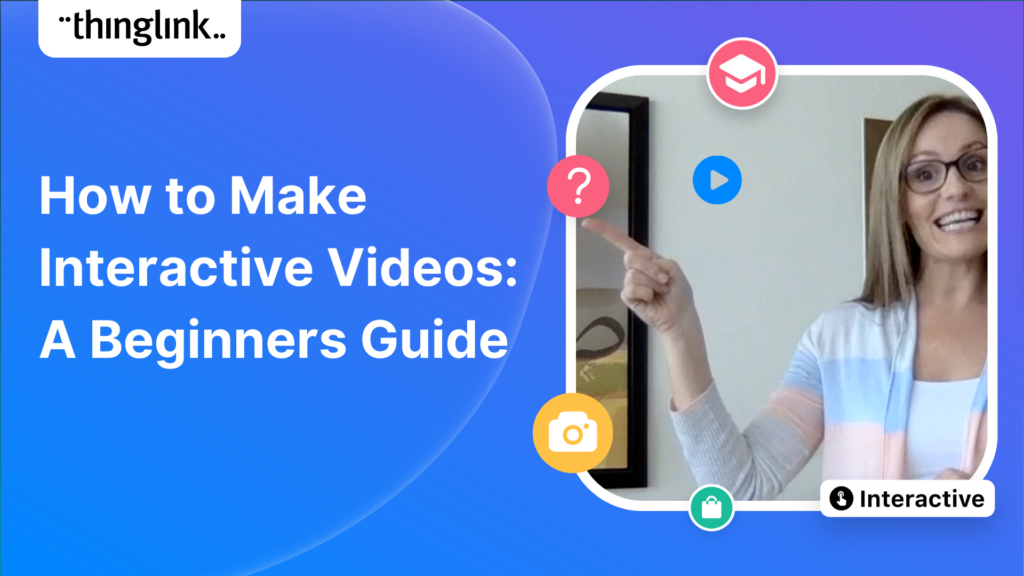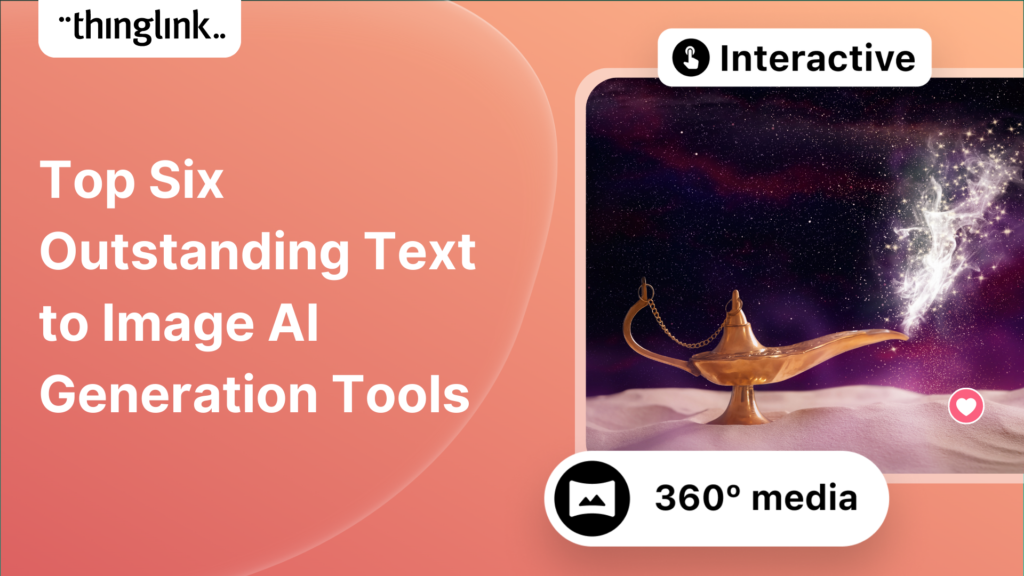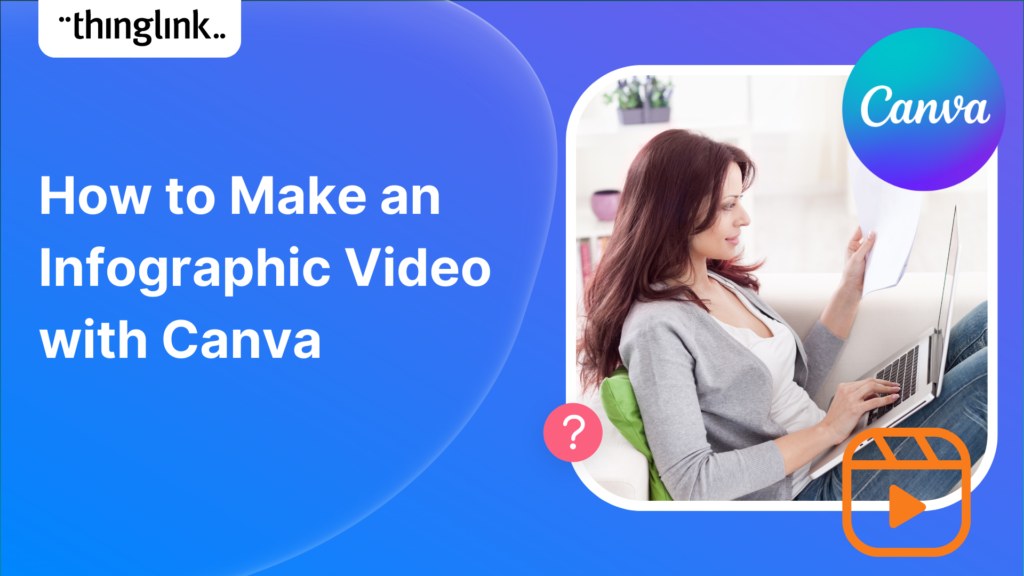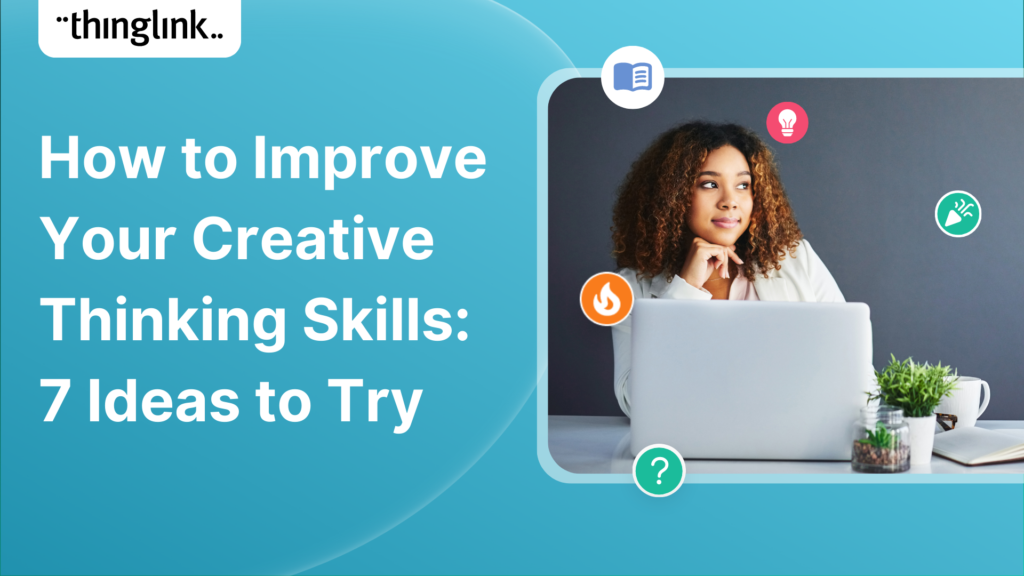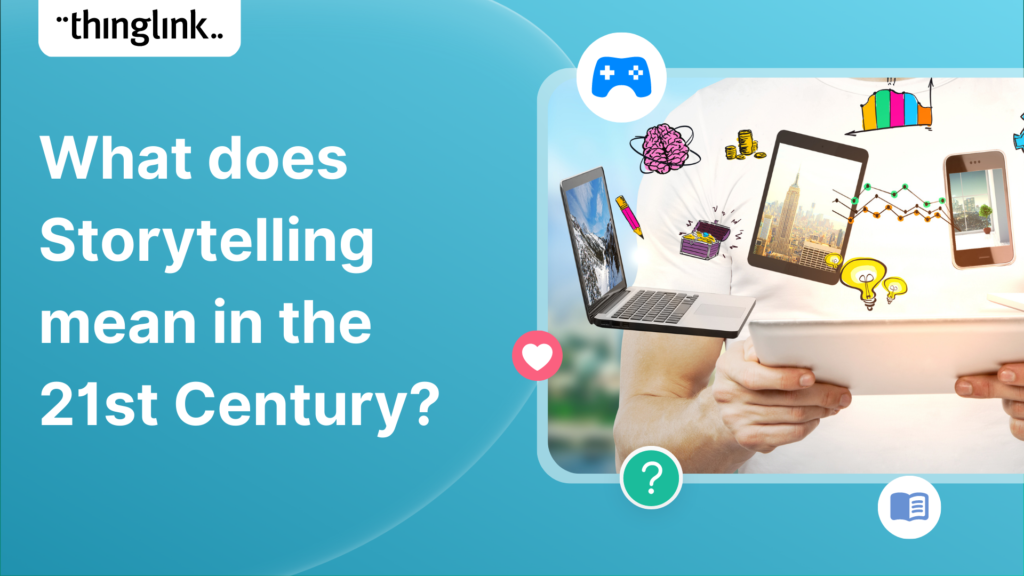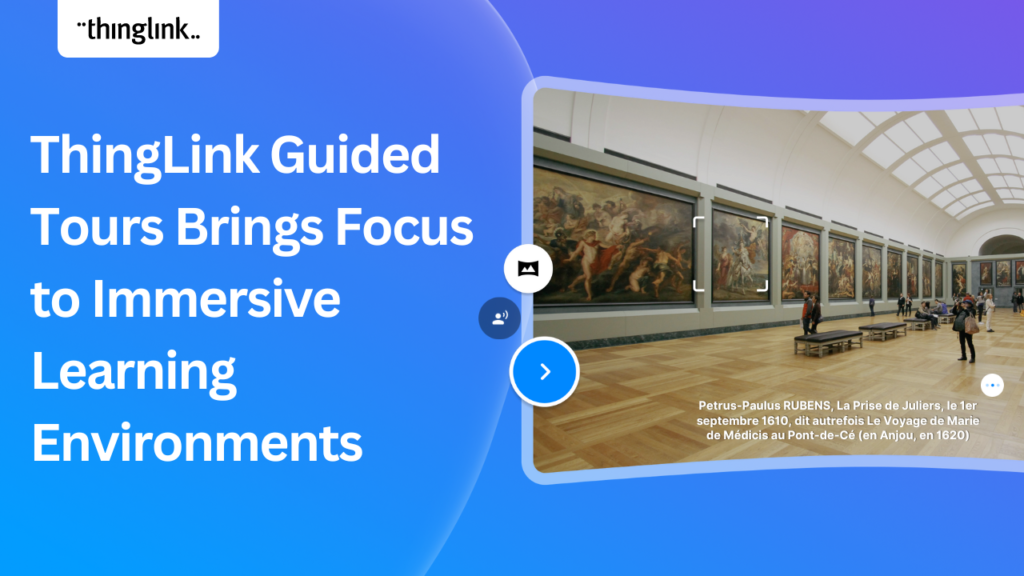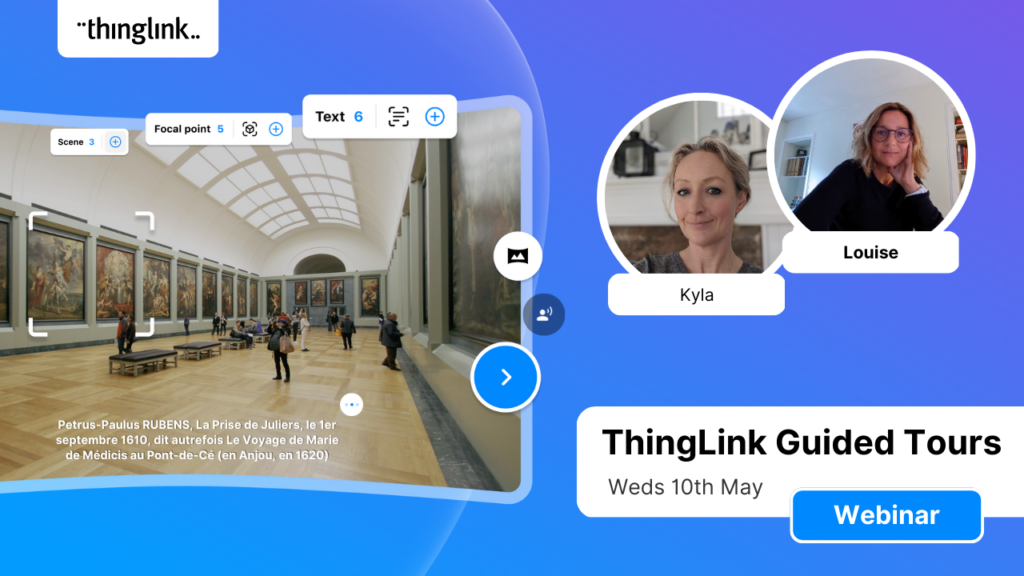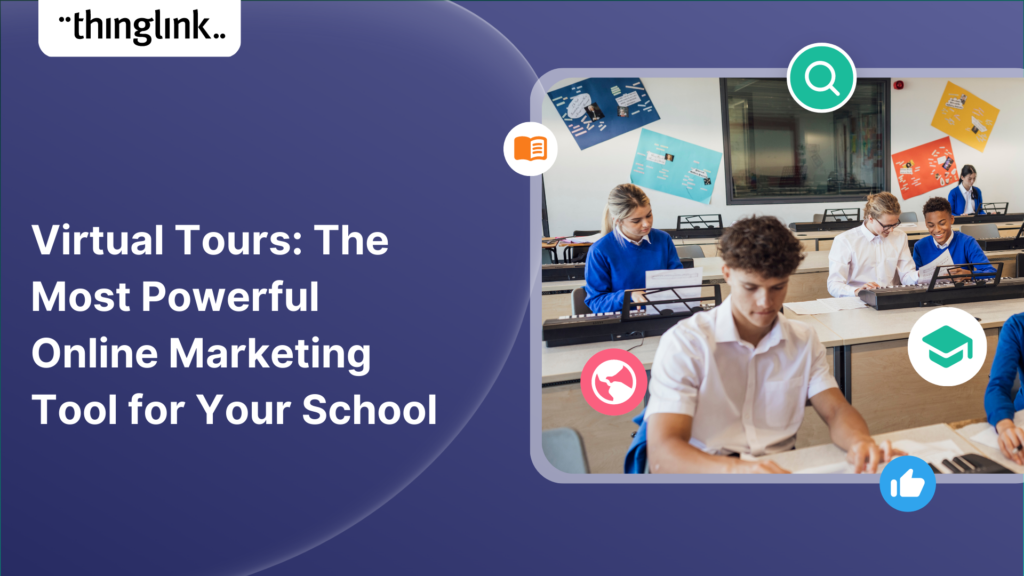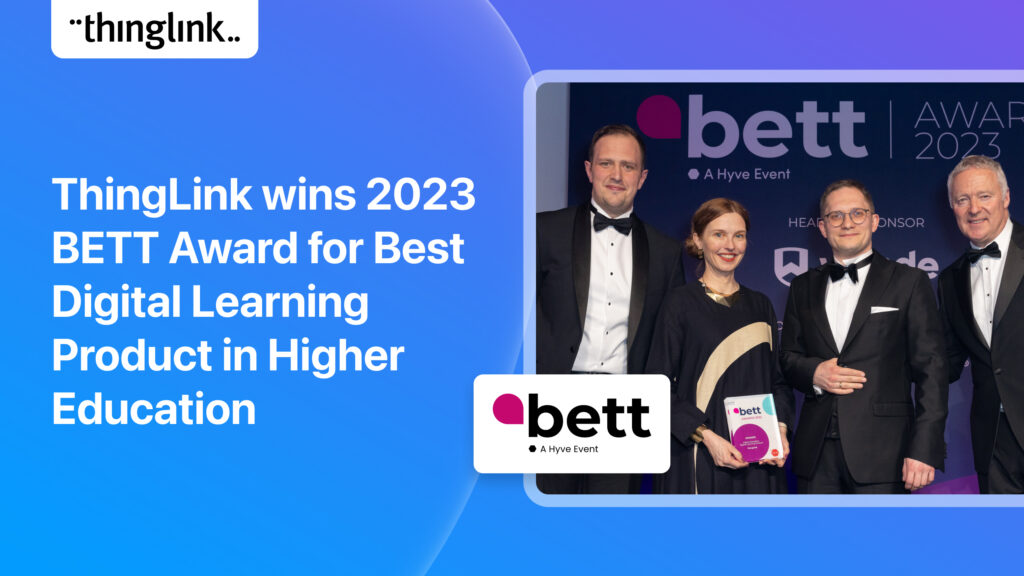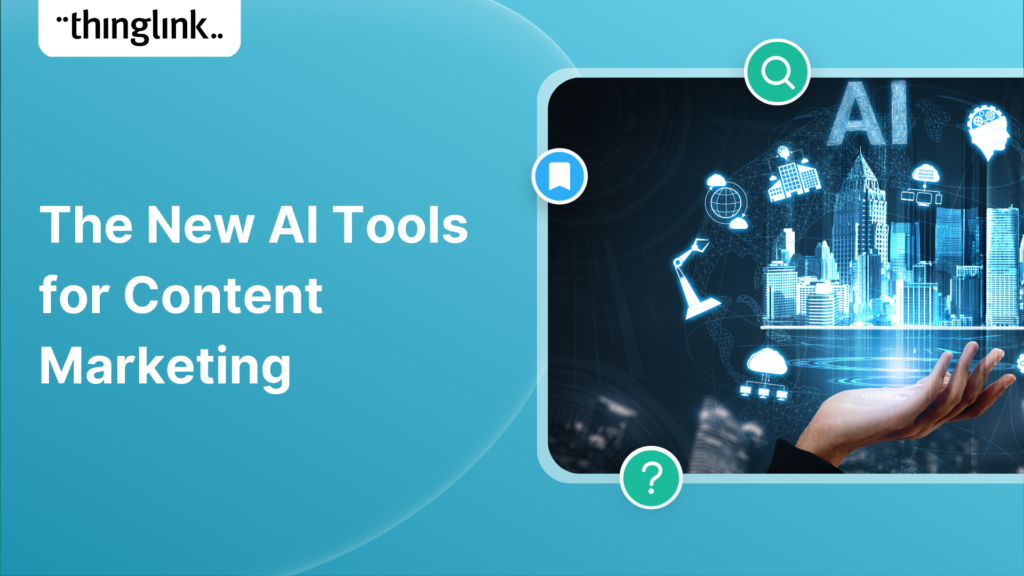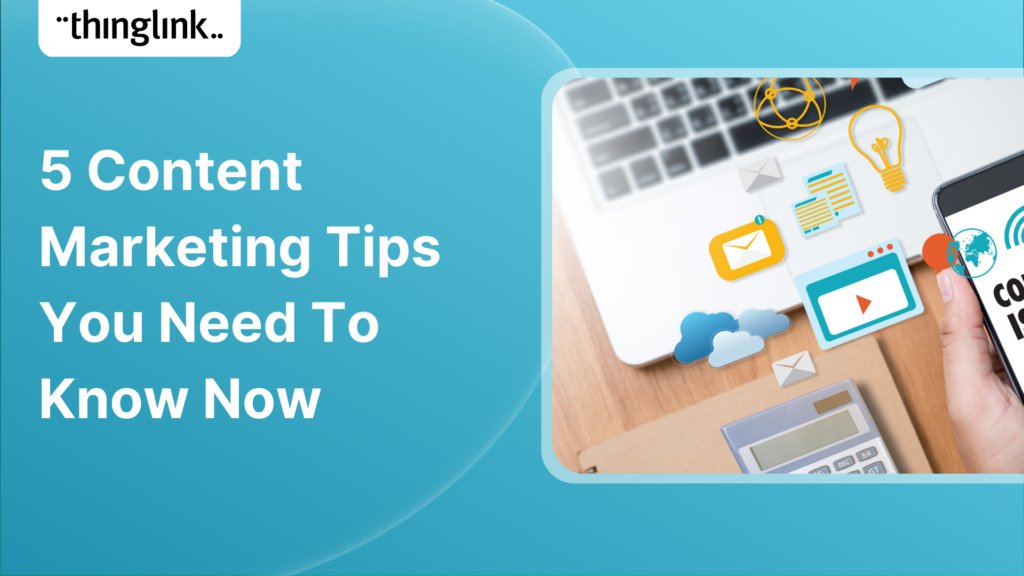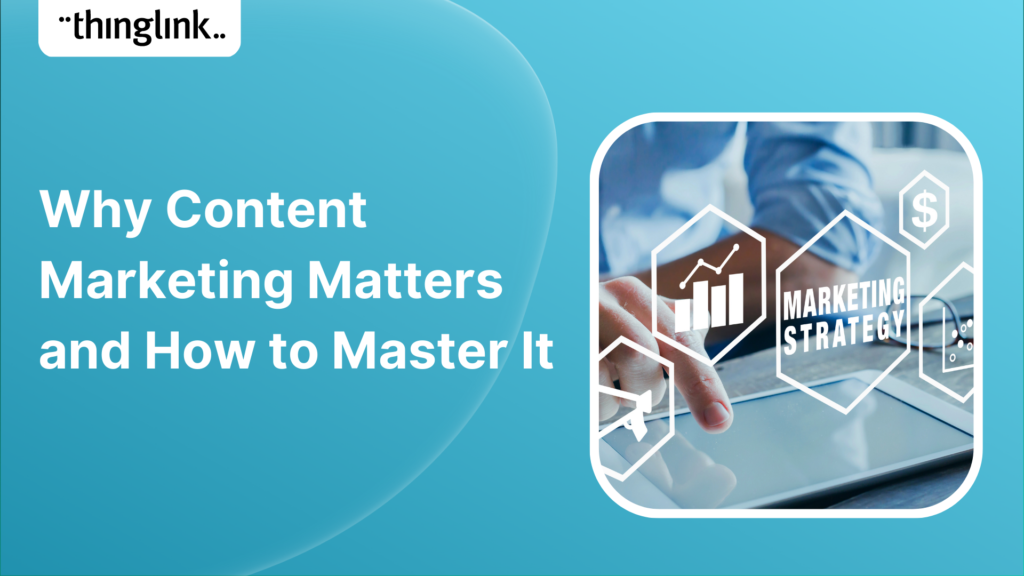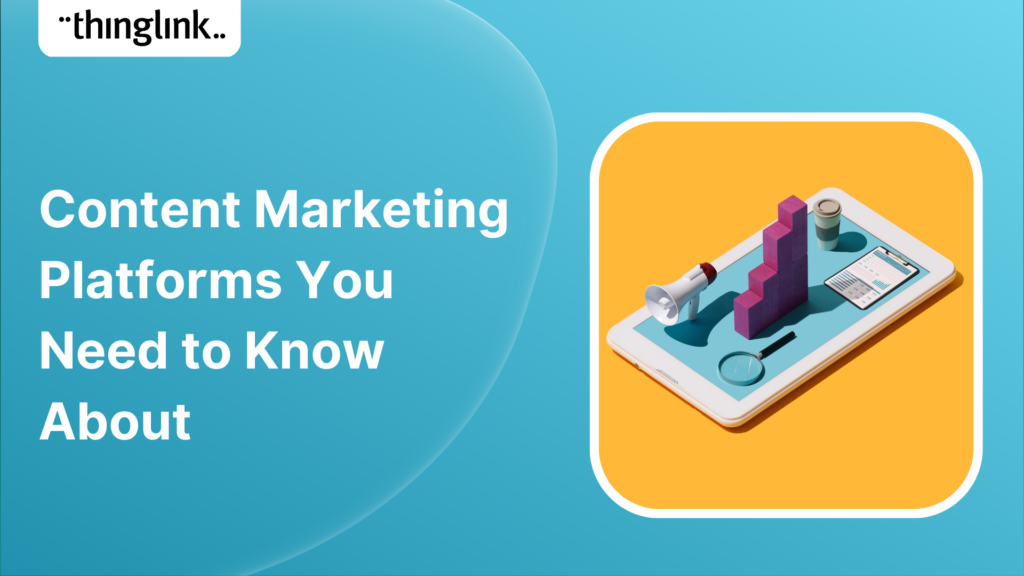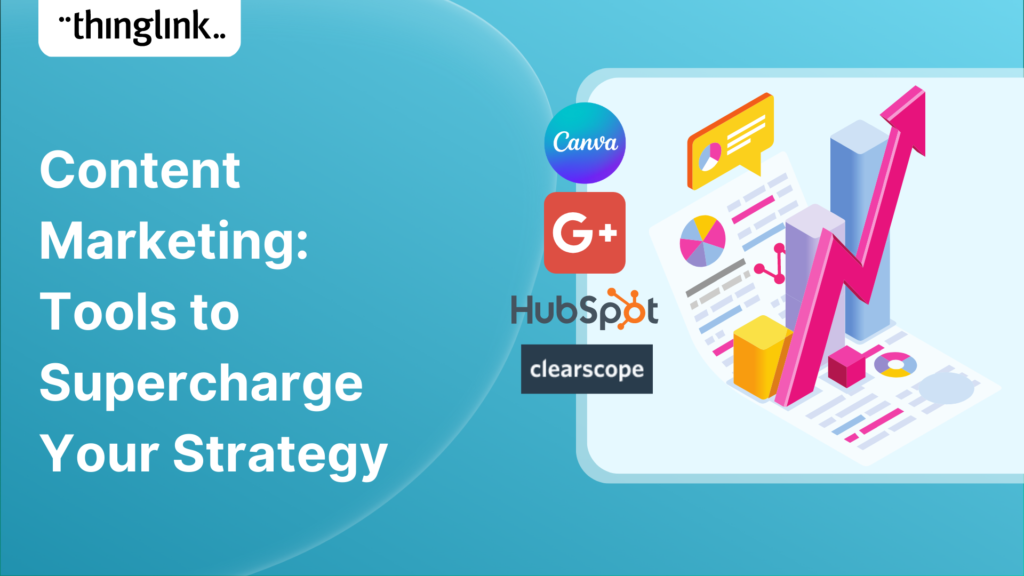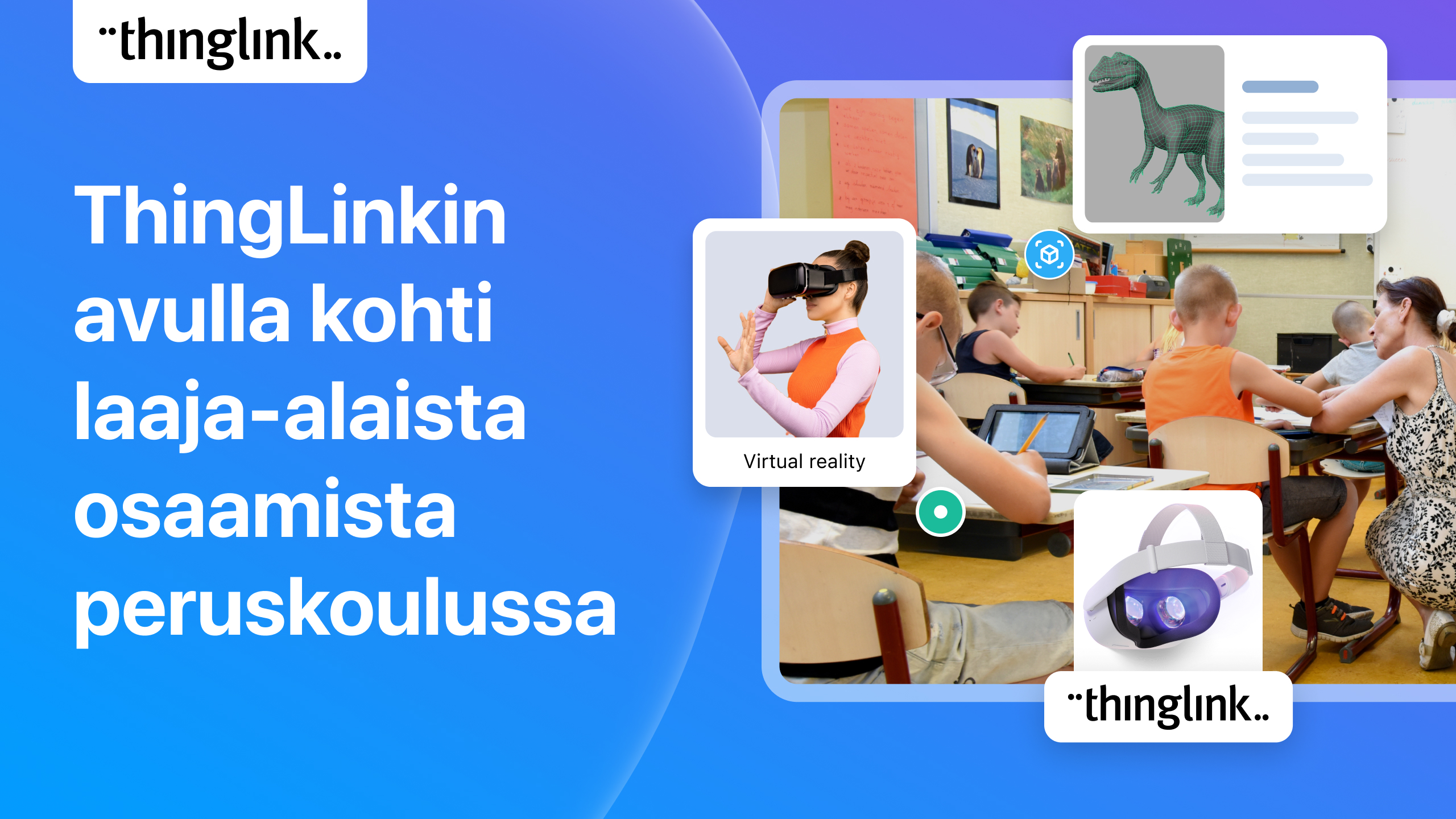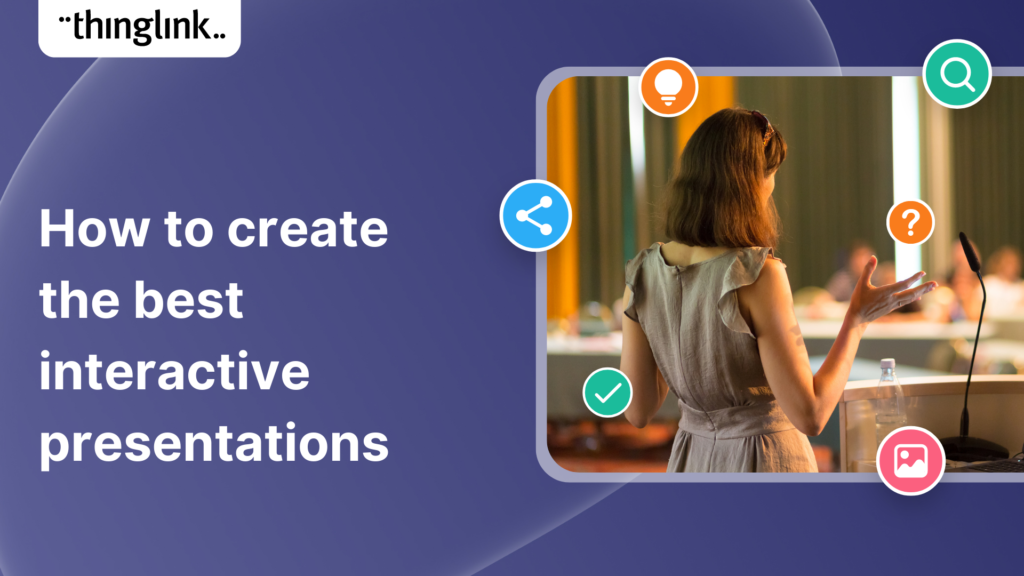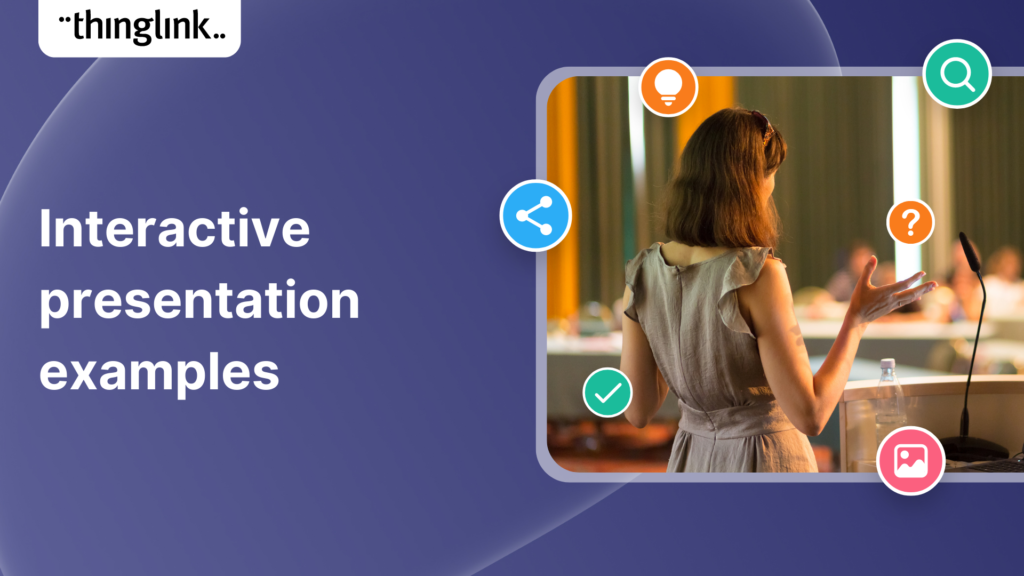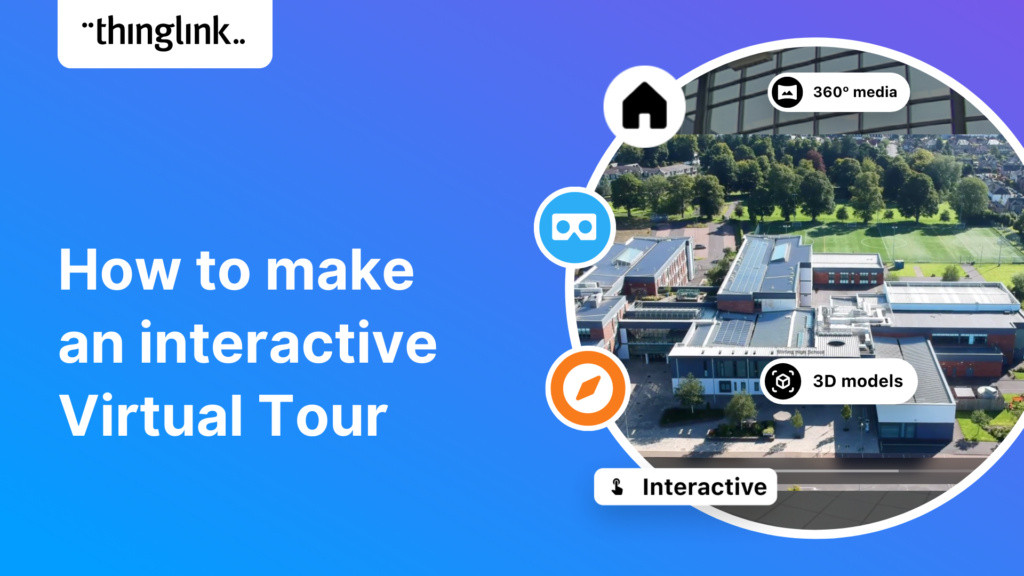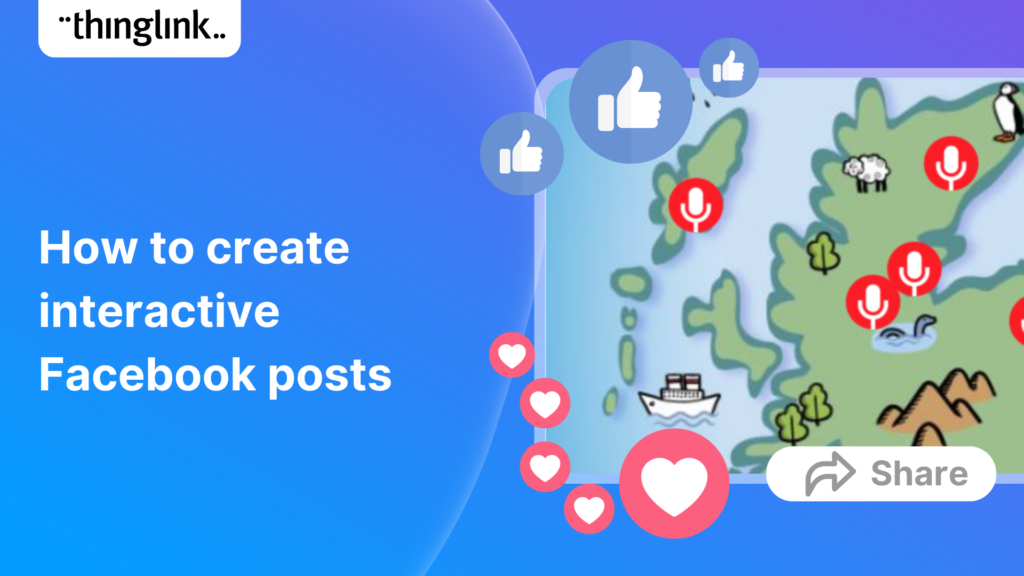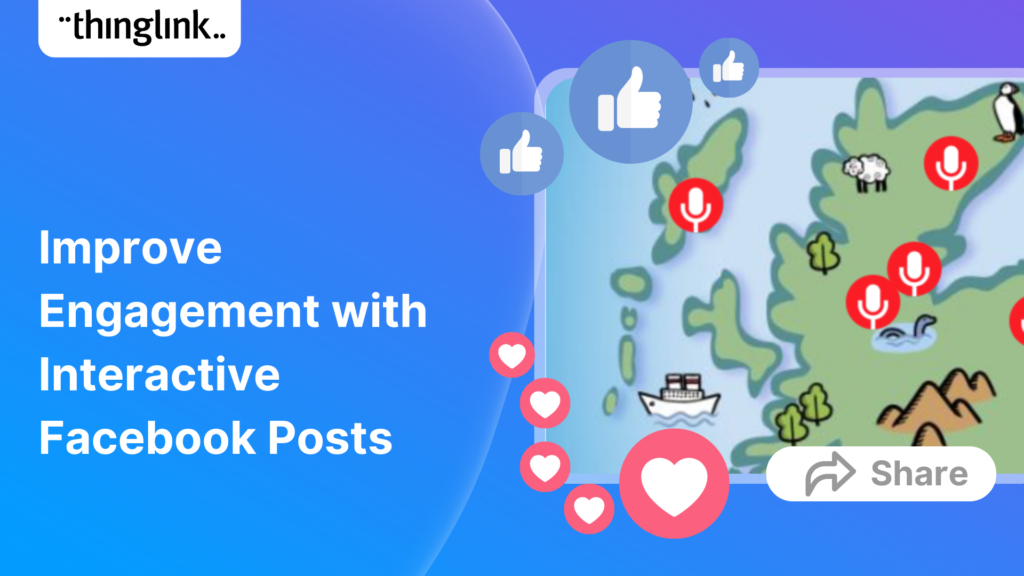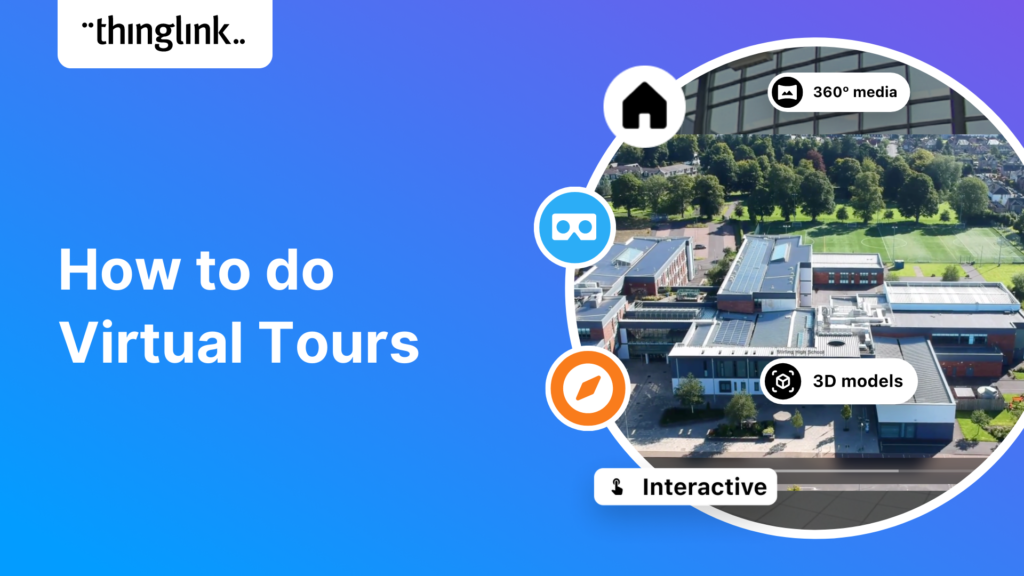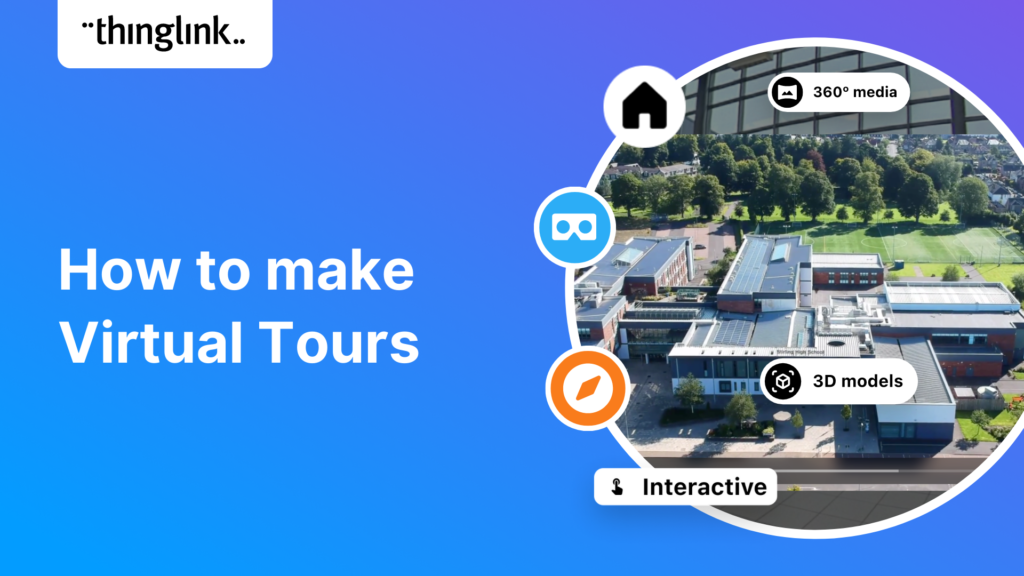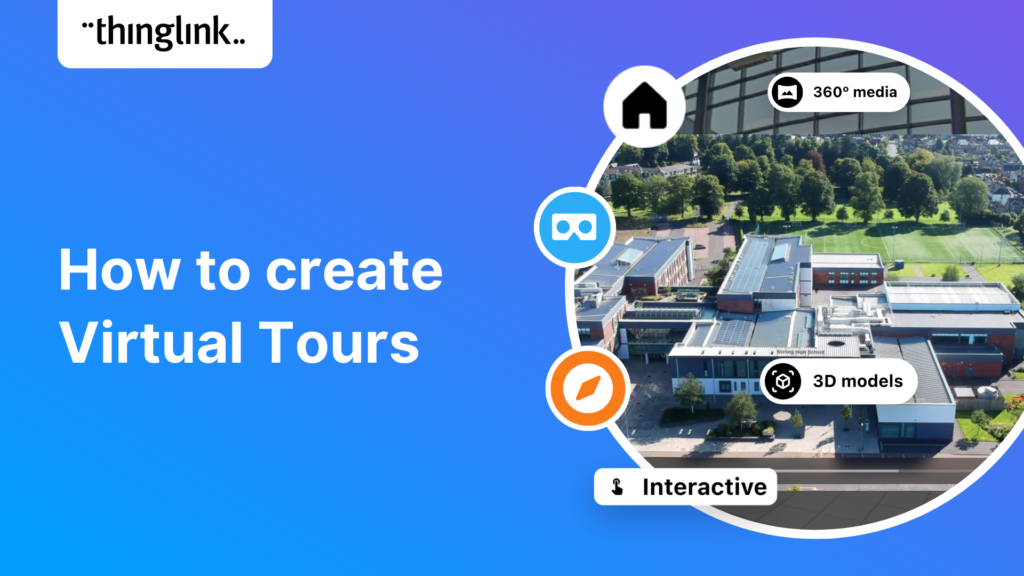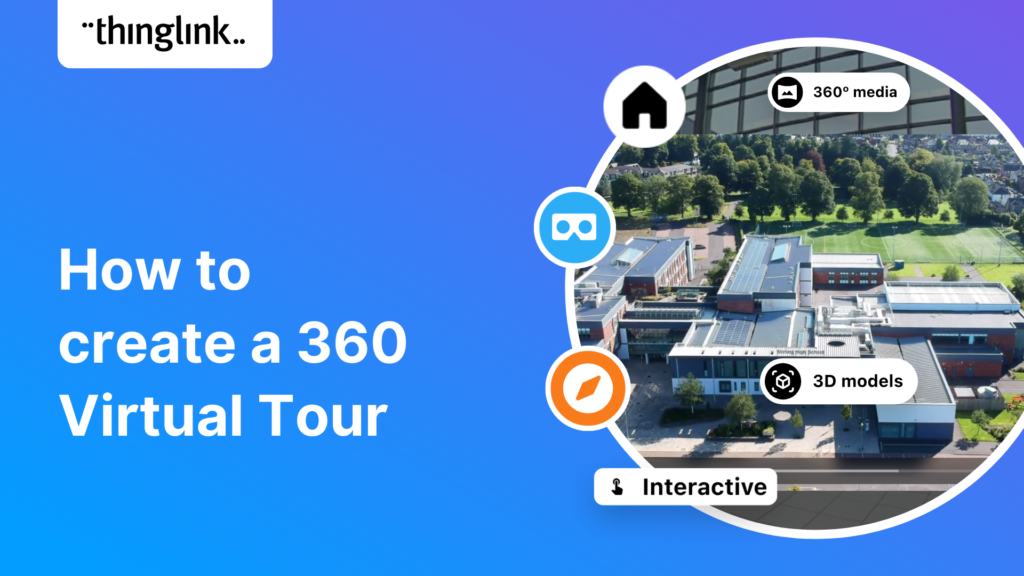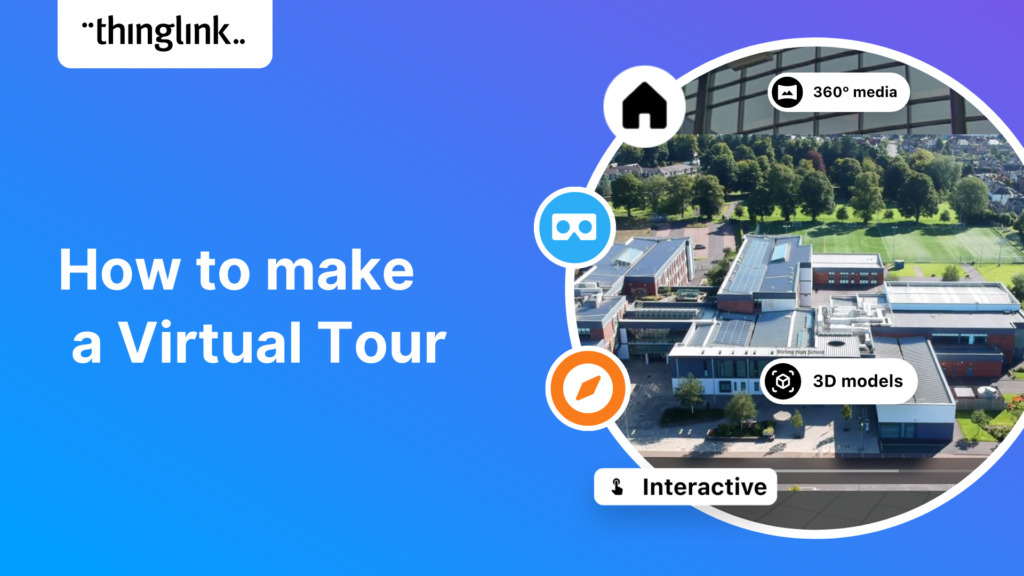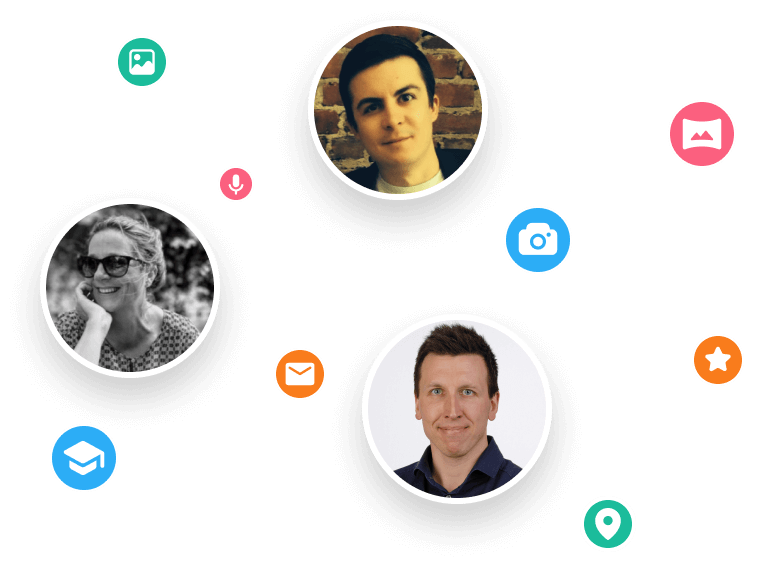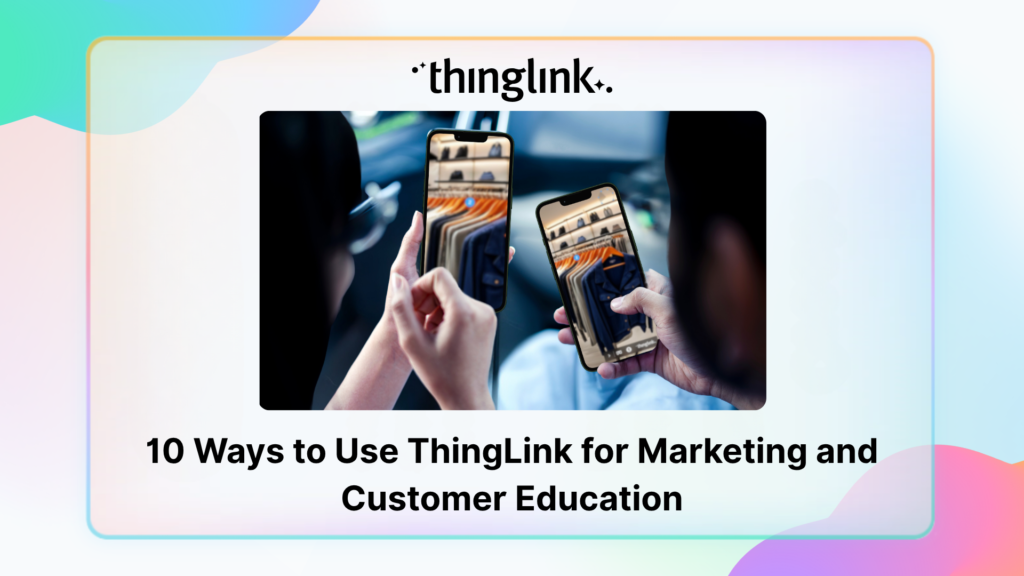
10 Ways to Use ThingLink for Marketing and Customer Education
Are marketers a type of educator? As the Marketing Manager here at ThingLink, I’ve been pondering this question after I recently told one of my colleagues, “I studied marketing, not pedagogy.” However, I’ve come to realize that what I’ve studied and practiced is a form of teaching: marketing is all about educating customers.
Promoting products and services doesn’t go very far unless you are helping people understand the real value and meaning behind your brand. Awareness matters, but customer understanding is where the true value lies. At our core, marketers are educators. We teach customers why our products exist, how they solve problems, and why they matter now. This kind of education is what builds confidence, trust, and ultimately, action.
The biggest challenge here is that education is continuously evolving. As new technologies emerge, so do new opportunities and new customer expectations. While customers aren’t necessarily seeking lessons from companies, they do expect to find useful, engaging content integrated into the places, technologies, and platforms where they choose to spend their time. Thus, static images and flat videos are falling short. Consumers are growing accustomed to interactive and immersive elements built into websites and digital experiences, and they are beginning to expect the same in AR and XR environments.
That’s where ThingLink comes in: an AI-powered platform for creating immersive, spatial, and interactive experiences. In this article, I’ll show you how to use ThingLink’s platform to modernize your marketing, elevate customer education, and create experiences that build a connection between consumers and your company.
10 Ways Marketers Can Use ThingLink to Educate and Engage Customers
With ThingLink, your imagination is the limit. Our AI-powered platform makes it fast and easy to create spatial, immersive, and interactive content. Instead of static assets that people scroll past, you can give them something to explore and remember. It saves your team time, makes your marketing more engaging, and connects customers to your brand in a deeper way.
1. Immersive Customer Education Hubs
Customer education is one of the most powerful ways to build trust and long-term loyalty. A hub filled with tutorials, courses, and certifications helps people learn your products and services, but when that hub is static, it is easy for customers to lose interest.
With ThingLink, you can create immersive customer education hubs that invite exploration to make learning stick. Instead of passively consuming content, users can click into hotspots for context, move through guided modules, and revisit training at their own pace. ThingLink experiences work seamlessly across mobile, desktop, tablet, and VR headsets, giving you full flexibility to design the right level of immersion for your audience.
These customer education hubs don’t just teach, they help attract leads, establish thought leadership, increase product usage, and decrease support needs. With ThingLink’s custom landing pages, you can organize tutorials, resources, and certifications into one branded space that looks and feels like a dedicated academy. Gating access with email sign-up also turns learners into warm leads you can continue to nurture in your CRM.
Who benefits most:
- In-house marketers building customer adoption resources
- Agencies offering branded academies for clients
- Product marketers scaling onboarding and support
Example: We use ThingLink ourselves for the ThingLink Certified XR Expert Course, which models what an engaging customer education hub can look like. Imagine a SaaS company creating a certification program for power users, or a consumer brand building a hub where fans explore how-to content for a product line.
2. Interactive Sales Enablement Content
Sales teams need materials that help prospects picture themselves using your product and seeing value from day one. Traditional sales enablement formats like PDFs and slide decks rarely create that level of connection.
With ThingLink, marketers can build interactive sales enablement content that makes the value of a product or service tangible. Instead of handing over a flat brochure, you can create a clickable demo, an explorable showroom, or a guided scenario that shows how your solution addresses real-world challenges. These formats give sales reps engaging tools they can tailor to each prospect and use to keep conversations focused.
For agencies, interactive pitch tools can be branded and delivered as reusable client assets. For in-house teams, they become a ready-to-use library that shortens sales cycles and builds confidence throughout the buying journey.
The most impactful sales content feels more like an experience than a pitch, helping prospects understand value quickly and leaving them with more trust in your brand.
Who benefits most:
- Agencies building reusable, branded pitch tools for clients
- In-house marketing teams supporting sales with content that shortens the sales cycle
- Product marketers creating demos that show value quickly
Example: A technology company could replace static sales decks with interactive demos that let prospects explore features tied directly to their use case. A marketing agency could send prospects a guided, clickable proposal that feels more like a campaign preview than a pitch.
3. Immersive Product Manuals
Product manuals are essential, but do customers really enjoy flipping through thick booklets or clunky PDFs? They’re hard to navigate and easy to ignore, which leaves customers stuck and support teams repeating the same answers again and again.
With ThingLink, manuals become immersive and interactive. Instead of reading page after page, customers can click on the part of the product they care about, watch short tutorials, or follow clear step-by-step guidance. For physical products, you can even create AR experiences that let users scan an item to open a 3D model with interactive tags showing exactly what they need to know.
Interactive manuals make learning part of the brand experience. They help customers feel confident using your product and turn education into another way to build loyalty.
Who benefits most:
- Product marketers simplifying complex products
- In-house teams reinforcing customer confidence and loyalty
- Agencies creating interactive guides as part of branded customer experiences
Example: Companies can create interactive product manuals that are more engaging and easier to understand, strengthening the overall brand experience and improving brand sentiment. A manufacturing company might create an interactive 3D model of a product, where each part is clickable for setup guidance. A consumer brand could design a digital how-to hub that shows customers not just how to use a product, but how to get more value out of it to build loyalty.
How to create interactive product guides with ThingLink
4. Immersive Trade Show Experiences
Trade shows are an opportunity to put your brand in front of the right people, but it’s not always easy to stand out. Booths are often crowded with signs, videos, and printed materials competing for attention, and visitors rarely have the time to absorb it all. The challenge isn’t about having content, it’s about finding a way to make it memorable.
With ThingLink, you can create interactive trade show experiences that pull people in and invite them to explore. A touchscreen or VR headset at your booth can become a virtual showroom where visitors dive into demos, product details, or guided tours. Some brands go bigger, projecting ThingLink scenes onto entire booth walls so attendees can walk up, tap, and interact with the content around them. By adding a QR code, you can give visitors easy access to the same experience on their own device, so they can refer back to it after the event.
A booth with interactive elements draws people in, creates richer conversations, and leaves prospects with a branded experience they’ll remember long after the show floor closes.
Who benefits most:
- Agencies creating show-stopping booths for clients
- In-house teams running trade shows or conferences
- Product marketers showcasing complex product portfolios
Example: KAESER Compressors used ThingLink to build an interactive 360° content to showcase at trade shows. Visitors could navigate through the 360° virtual tour, click on tags to expand details, and get a feel for the company’s solutions in a way that was far more engaging than static displays.
“ThingLink has been a great tool because our products aren’t available for prospects to view in person, outside of trade shows. The content is easy to create, and easy to use.”
– KAESER
5. Custom Branded AR or VR Apps
Normally, when you create AR or VR content with ThingLink, your audience opens it in the ThingLink AR or ThingLink VR app. For companies that want every touchpoint to reflect their own brand, we can take it a step further.
That’s where custom-branded AR and VR apps come in. We can build you a version of the ThingLink app that carries your name, your logo, and your identity. Customers open your app, not ours, but the immersive experiences inside are still designed and managed with the ThingLink platform you already use.
When customers download your branded AR or VR app, every interaction reinforces your identity and strengthens their relationship with your brand. The experience feels polished and premium, and because it’s built on a platform that makes it easy to manage and scale, it grows with your needs.
Who benefits most:
- Agencies delivering white-labeled immersive apps to clients
- In-house teams creating branded immersive customer education or training apps
- Product marketers launching branded AR and VR product experiences
Example: An agency could deliver a branded VR app that lets a client’s prospects explore campaign concepts in an immersive environment. A B2B manufacturer could launch an AR app where customers scan equipment to see branded interactive overlays that explain features and benefits. Both examples keep the experience entirely tied to the company’s brand while being built on ThingLink’s platform.
6. Team Training
Marketing teams and the platforms we manage are constantly evolving. New tools emerge, processes shift, and best practices grow more complex. Traditional approaches to platform training, like slide decks, PDFs, or long training calls, are not engaging and rarely stick.
With ThingLink, you can create interactive training resources that are always accessible and easy to update. For example, you can upload screenshots of a platform’s interface into the ThingLink Multimedia Editor and add tags that guide users through each step they need to know. Knowledge check tags can be embedded along the way to make sure the training sticks.
This approach saves time on hosting live training sessions, increases knowledge retention for new employees, and gives teams a consistent resource they can revisit whenever needed.
Who benefits most:
- In-house marketing teams onboarding employees and contractors
- Agencies training clients on platforms and processes
Example: A marketing agency could design an interactive tutorial for clients on how to manage ad campaigns in Meta Ads Manager. An in-house team might build a branded onboarding hub with interactive walk-throughs for new trainees or interns to quickly learn how to operate new platforms.
Explore our example training about how to use the ThingLink platform:
7. More Engaging Content for Social Media
Social media moves fast, and static image posts are easy to scroll past. Marketers need content that stands out, sparks curiosity, and gets people to engage.
While most platforms don’t allow you to embed ThingLink content directly into a post, you can still use it to power your social strategy. You can share links to interactive experiences, or repurpose them by creating screen recordings that work as scroll-stopping videos. Either way, you’re giving audiences something far more engaging than a flat graphic.
This approach gives you social content that captures more attention, generates higher engagement, and strengthens brand visibility.
Who benefits most:
- Digital marketers building creative, dynamic social campaigns
- In-house teams looking to boost engagement across organic and paid social
- Agencies creating fresh, interactive assets for clients
Example: Vaisala created a virtual tour of their company campus with ThingLink and shared it as a LinkedIn post. It quickly became one of their most popular posts of the year, earning about 30% more views, 50% more reactions, and ten times more shares compared to a typical post.
8. Gamified Customer Experiences
Customers love brand experiences that are fun, interactive, and rewarding. Traditional marketing campaigns often focus on information, but adding a layer of gamification gives people a reason to come back, engage longer, and generate buzz when they share with others.
With ThingLink, you can design immersive gamified experiences that give customers new ways to connect with your brand. These experiences can unlock exclusive content, discounts, free gifts, or bonuses, or simply add a playful layer that strengthens loyalty and keeps your brand top of mind.
Gamified experiences turn engagement into loyalty by rewarding customers in ways that feel playful, personal, and connected to your brand.
Who benefits most:
- Digital marketers running engagement-driven campaigns
- In-house teams building customer loyalty programs
- Agencies delivering unique, creative campaigns for clients
Example: A retail brand could create an immersive quiz where players answer product-related questions and earn a personalized discount code at the end. A travel company could build an immersive gamified hub with ThingLink, where visitors unlock hidden experiences or exclusive offers by exploring interactive maps and stories.
9. Immersive Website Content
Websites are often one of the first touchpoints customers have with your brand. The challenge is making those pages do more than just deliver information. Marketers need ways to create engaging, interactive experiences without having to invest in heavy custom development.
With ThingLink, any interactive content you create can be embedded directly on your website. Instead of static images, visitors can explore interactive graphics, click into 360° views, or move through guided scenarios. This adds a layer of interactivity that keeps people on the page longer and makes your brand story easier to understand and remember.
Embedding interactive experiences makes your website more engaging, keeps visitors exploring longer, and helps them better understand the value of your brand.
Who benefits most:
- In-house marketers updating product or solution pages
- Digital marketers optimizing websites for engagement
- Agencies creating immersive microsites or landing pages for clients
Example: A travel company could replace static destination photos with interactive maps where visitors click to explore experiences and itineraries. A SaaS brand could embed an interactive product demo on its homepage so prospects immediately understand the value without booking a call.
Check out this example of how a cafe highlights weekly offerings through an immersive experience, which could be embedded on a website or showcased on social media:
10. Experiential Marketing
Experiential marketing is all about creating moments people want to remember and share. Whether it’s an in-person activation or a digital campaign, the goal is to make customers feel part of the story rather than just observers.
With ThingLink, you can design immersive brand experiences that move seamlessly between live and digital spaces. At an event or pop-up, you might transform a room into an interactive playground by projecting a gamified ThingLink scene onto four walls. Online, the same content can be shared as an interactive experience that customers explore on their own time and devices.
Immersive brand activations create memories worth sharing, turning customers from observers into participants in your story.
Who benefits most:
- In-house marketers turning product launches into memorable experiences
- Agencies building bold, interactive activations that stand out from competitors
- Digital marketers extending the life of events by creating shareable online experiences to connect with audiences through storytelling
Example: A beverage brand could create a virtual tasting room where customers unlock flavor notes and recipes by interacting with hotspots. At a live event, that same experience could become an immersive room, then be shared online so fans everywhere can join in.
As marketers, we want to create experiences that attract customers to participate and stick with them once they do. ThingLink helps you design activations that turn brand interactions into memories worth cherishing and sharing.
Customer Education Through Immersive Experiences
As you’ve seen throughout these ideas, educating customers is integral to so many aspects of marketing. Whether you’re helping prospects understand a product, guiding customers through a process, or designing experiences they’ll remember, education is always part of the craft. ThingLink gives you the tools to make that education immersive, interactive, and unforgettable.
These ten ideas are just a starting point. Some will resonate more in certain industries or roles than others, but the real opportunity comes when you apply your own creativity. With your imagination combined with the power of ThingLink, the possibilities are endless.
Our Create Starter and Create XR plans are the perfect way to begin experimenting with immersive and spatial content. Purchase a ThingLink Creator Plan today, or book a demo to learn more about our enterprise plans to scale immersive learning and training throughout departments with ThingLink.
